Hello from Hoorn! I was hoping to write some blog posts whilst i was here, but my editor isn’t letting me upload my holiday photos and there’s no way to fix it until i get back, so i’m afraid you’ll have to wait.
— Love, Xan
Hello from Hoorn! I was hoping to write some blog posts whilst i was here, but my editor isn’t letting me upload my holiday photos and there’s no way to fix it until i get back, so i’m afraid you’ll have to wait.
— Love, Xan
I’ve done some fairly interesting things this month, and had planned to write posts for each of them — but, for whatever reason, none of them provided that particular spark to me. Maybe they just didn’t seem that interesting to explain to you, the reader, or maybe i didn’t know what to say about them except the obvious.
Nonetheless, it would be a shame for these events to pass into the annals of my journal without telling you about them. So! Here’s a brief summary of my unblogged July thus far.
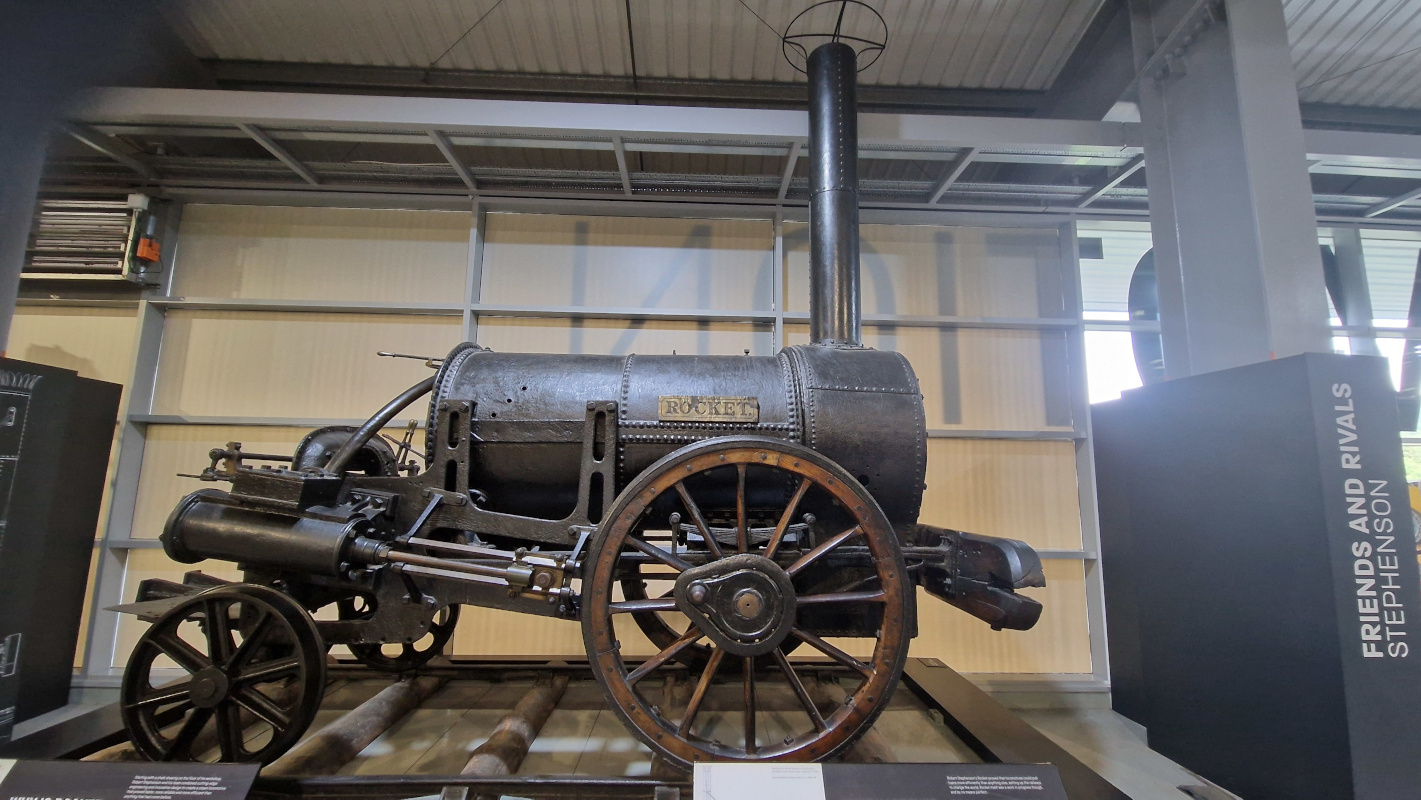
I toddled off to Shildon to visit Locomotion, the local branch of the national railway museum. It’s the birthday of the railways, and thus boasts a disproportionate selection of anorak arcana — alas, you can’t go in the trains, but you get a pretty good look at the inside of Queen Alexandra’s royal train car, the erstwhile Birmingham maglev, and, most proudly, Stephenson’s Rocket.
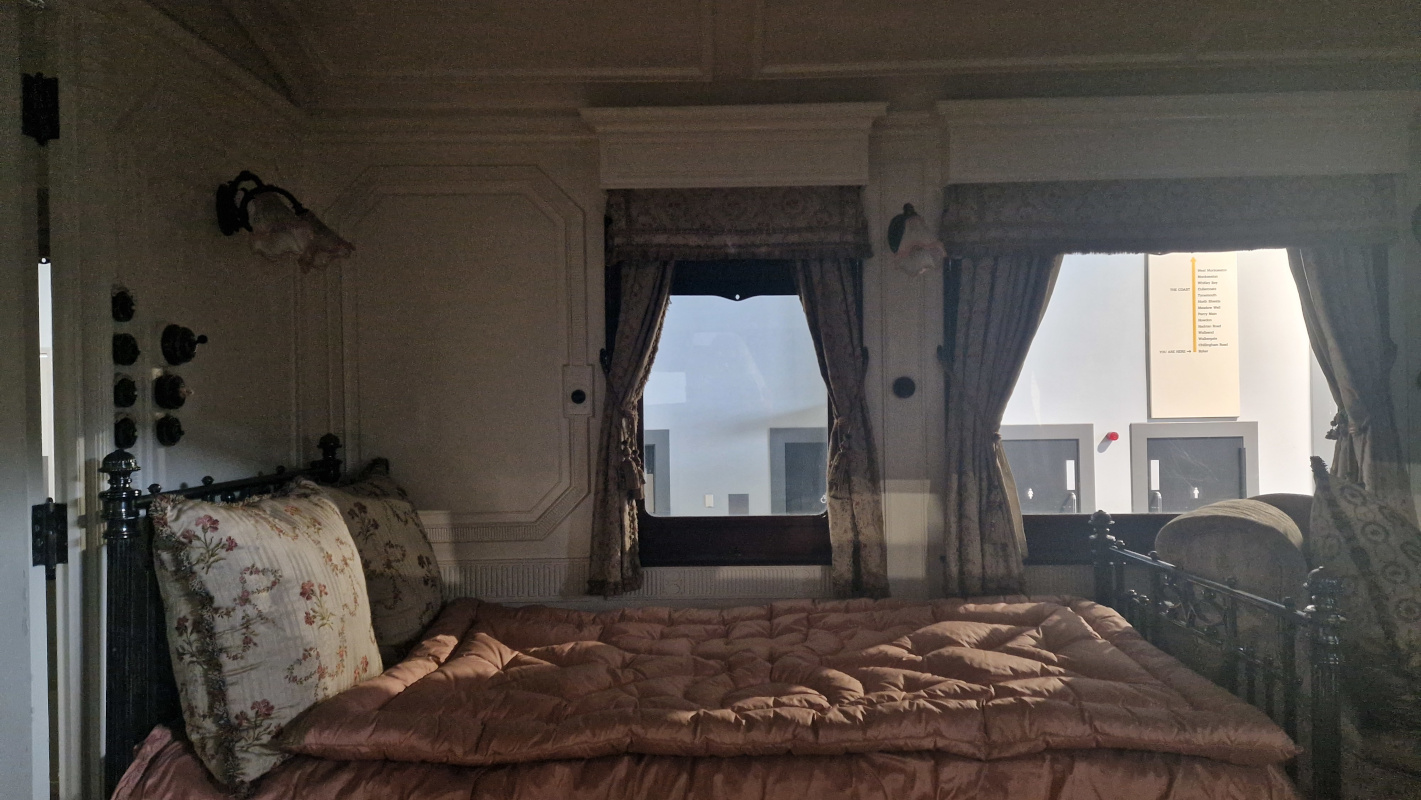
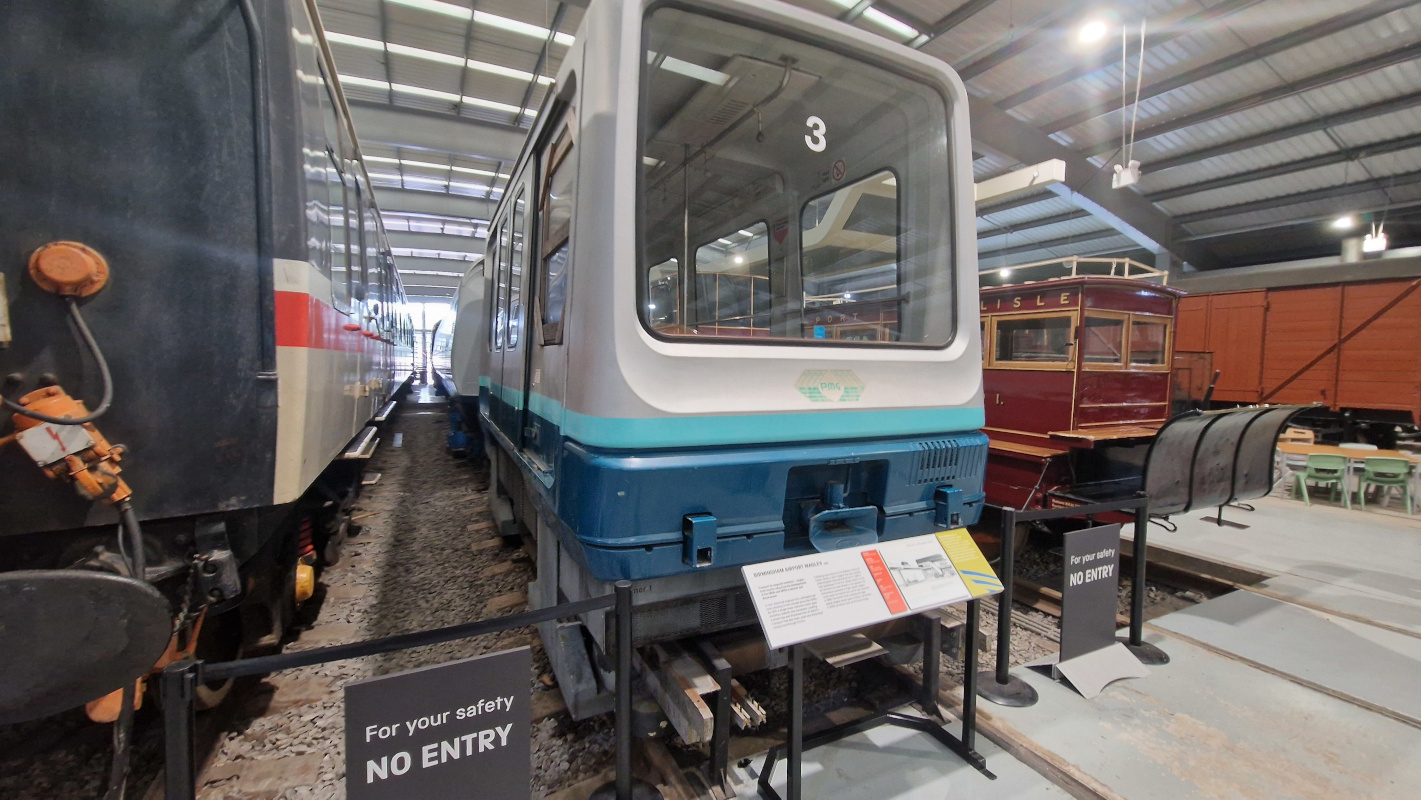
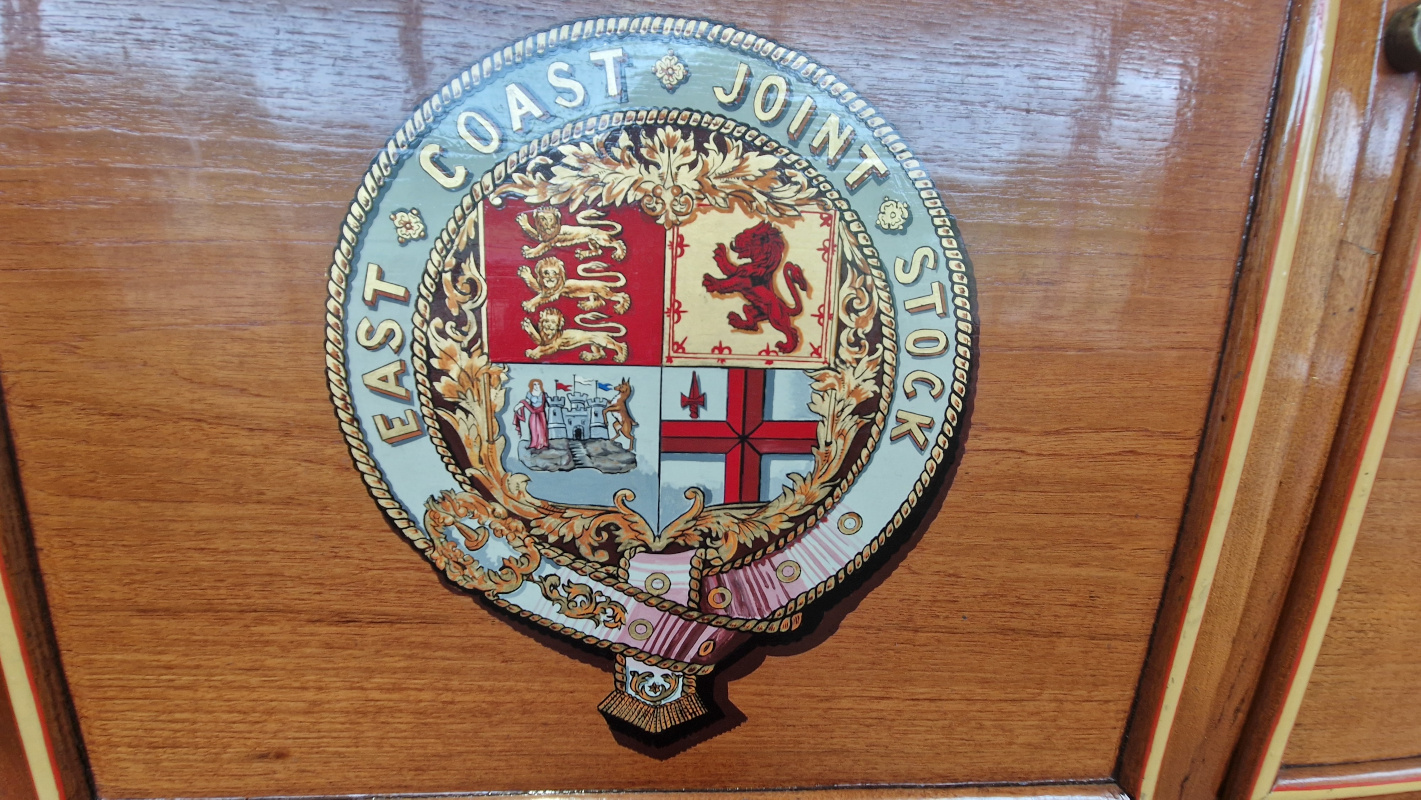
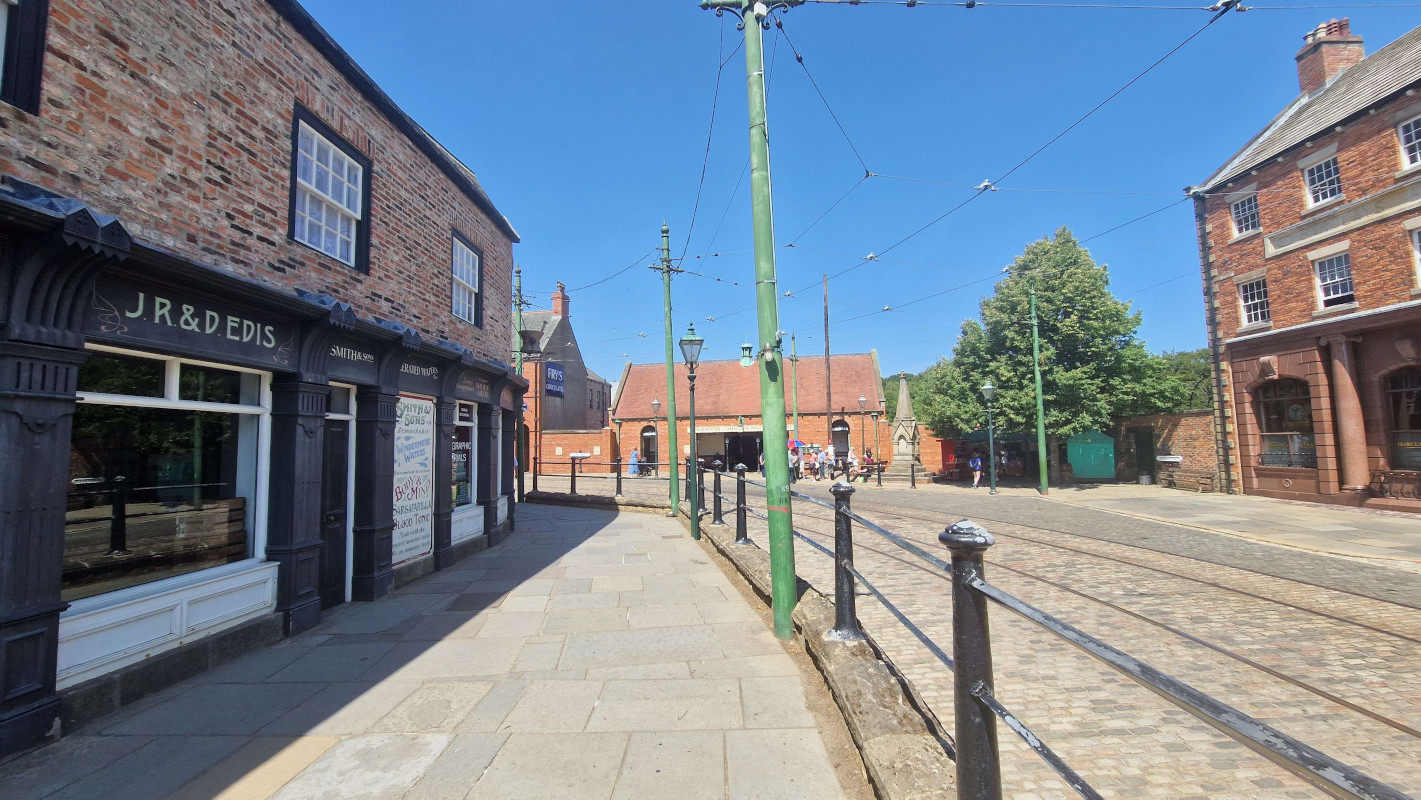
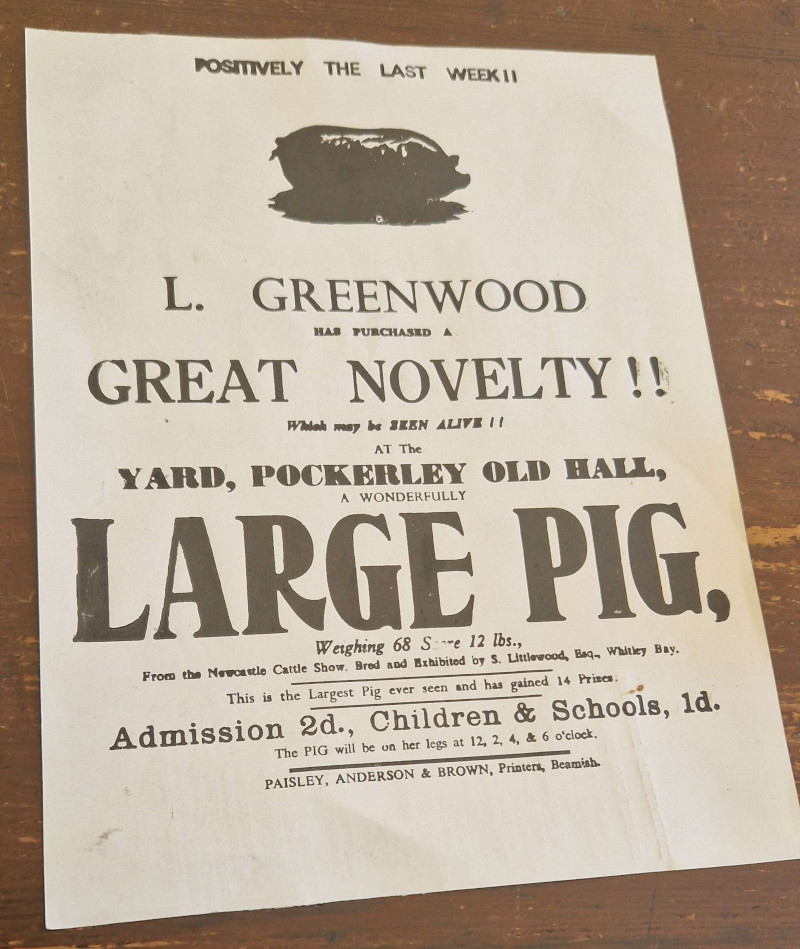
Beamish1 has been newly crowned Museum of the Year, so there was no better time to check it out. I hadn’t properly explored their new fifties town yet — the chippie and the old houses are wonderful, but the record store, crammed up the stairs, across an anachronistically modern mezzanine, and down a grey corridor, leaves much to be desired. Nitpicks about balcony design aside, it’s as great as ever, and, somehow, well worth the £33(!!!!!) asking price.
Finally, just yesterday, i went off to an Elbow concert hosted in a ruined mediæval priory by the sea. Belting out “One Day Like This” in the fading dusk light with five thousand other people standing on the same hallowed ground where monks tried to figure out where baby eels came from is a top-ten human experience.
Washington1, a town in urban County Durham long since incorporated into Sunderland, is not a place where one expects much nature. The palatinate’s chirping woods and rolling Pennine moors are not so far away, and the path i took to get to today’s attraction led not through winding country roads but broad, grey industrial arteries, designed to ferry thousands to and from Nissan’s immense factory.
But at the end of the road, down by the river Wear, there lies a wee patch of idyll: the Washington Wetland Centre.
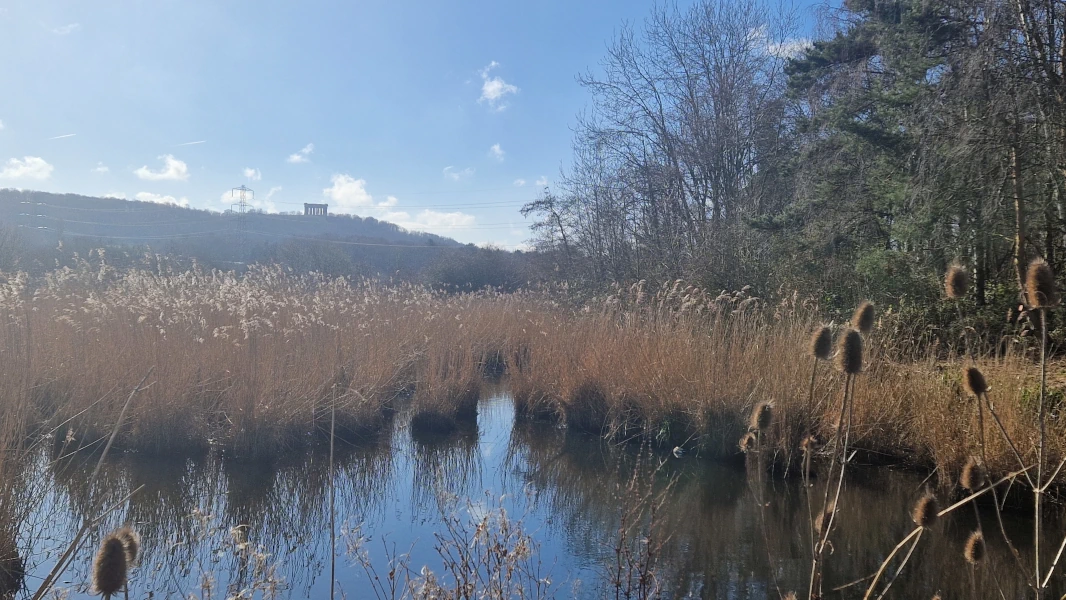
I’d come on a good day for it, clearly, as the first thing i saw coming out of reception was the staff corralling all the ducks together for their annual vaccination, by means of a ramshackle assemblage of mesh fences. (Crowd control for birds!) The littlest one kept trying to escape his jab like an ornithological Bobby Kennedy.
Most fabulous of all creatures of the air on offer are the eiders, the diva-est ducks in the world, emitting a chorus of sassy coos as they revel in their status as undisputed kings of the pond. (You’ll have to take my word for it, as i neglected to take a video, erring towards the side of it being better to live in the moment than through a phone camera. I was yet to realise what good blog-fodder the visit would make.)
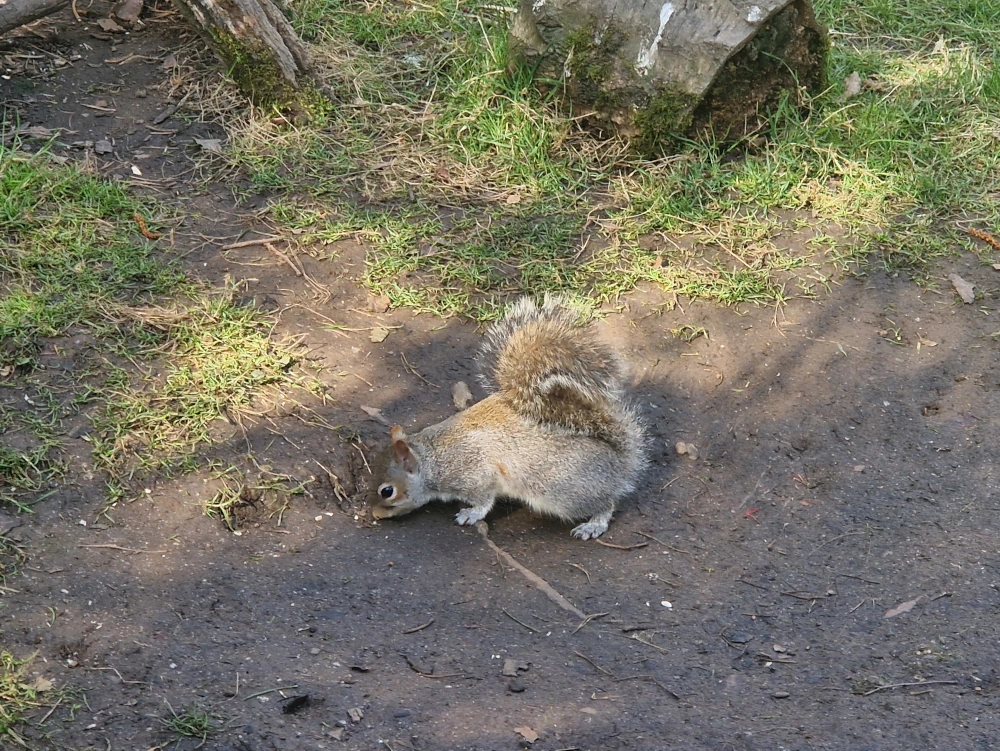
On the other side of the preserve a viewing area juts out to overlook the Wear — still salty and tidal this close to the sea — and an artificial saline lagoon, built to provide a home for those creatures who prefer a more brackish milieu. The signs tell me that, rare as they historically have been, more and more European otters have made their home along the wear, and the lucky visitor might hope to see one… if only the centre were open at dawn or at dusk, when they come out.
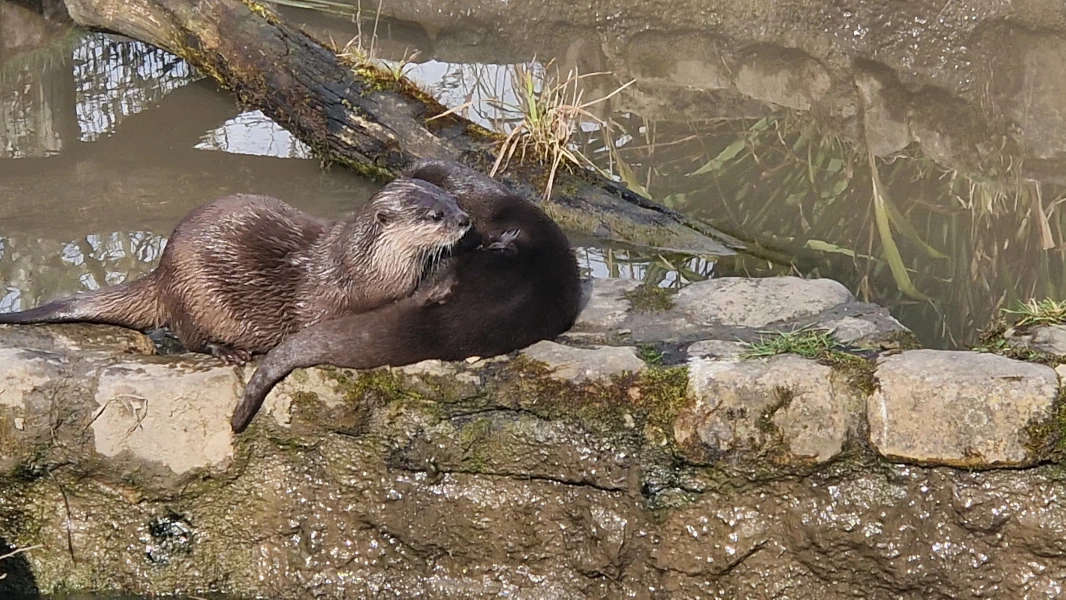
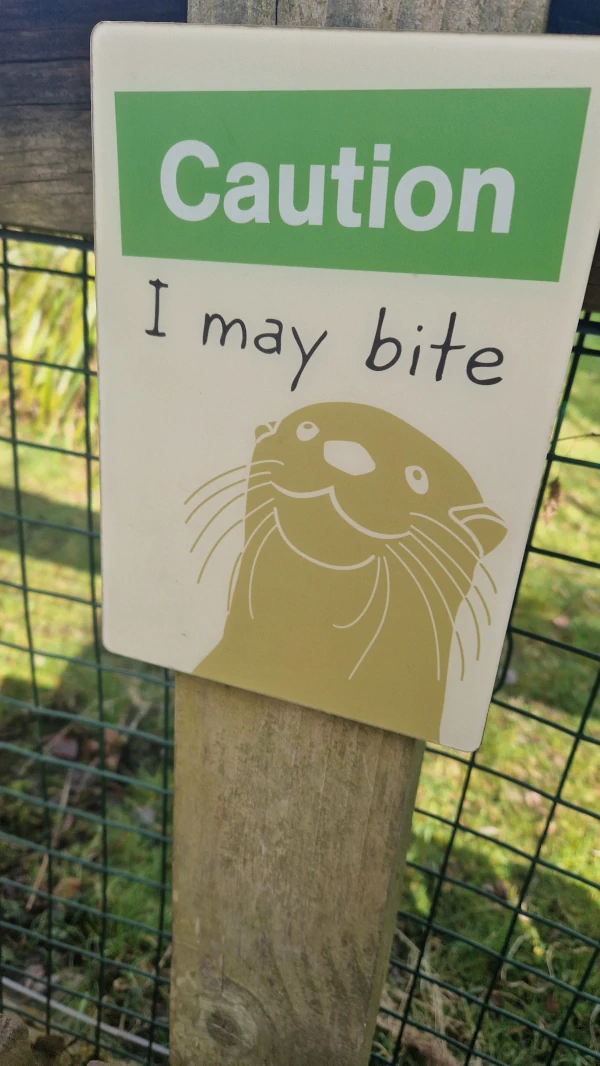
Not to worry, for the centre are also very proud of their main mammal enclosure: a family of utterly2 adorable Asian small-clawed otters. They’re a lot less squeaky than the ones at Northumberland Zoo, and wondering why, two theories popped into my head.
First, that it’s the Northumbrians’ fault. Their northern sibs were greater in number, a family of four to Durham’s two, and they were, by all accounts, masters of putting on a show. They appeared in an orderly fashion when their circadian rhythms told them it was feeding time, pipped and squeaked incessantly at the keeper until they got their fish, performed some cuteness, and then went back inside when their bellies were full. They knew exactly what they were doing, methinks.
Second, that the Washingtonian otters were grieving. I said there were two, the younger Buster and the elder Musa, and you might be hard-pressed to call that a family. But until this month, there were three. Mimi, the clan’s matriarch and a scamp who bonked so much they had to give her a lutrine IUD, passed of old age at fourteen (a good innings by her species’ standards, no doubt). When she went, they had to put her corpse back in the enclosure so the others would understand.

They were still otters. Still playful. But something about them seemed… morose. Maybe, in between the fish and the scampering and the puzzle feeders, they were still thinking about her.
On the way out, i passed a tiny observatory, cleverly named “Cygnus” for the constellation of the swan, used by night for the Sunderland Astronomical Society. I don’t know if it’s of much use this far into the zone of light pollution, but they certainly seem to enjoy it, so perhaps my relatively sky-privileged Northumbrian self shouldn’t play the lecturer. Perhaps that fateful night that Mimi died, a star in the sky began to twinkle a little brighter.
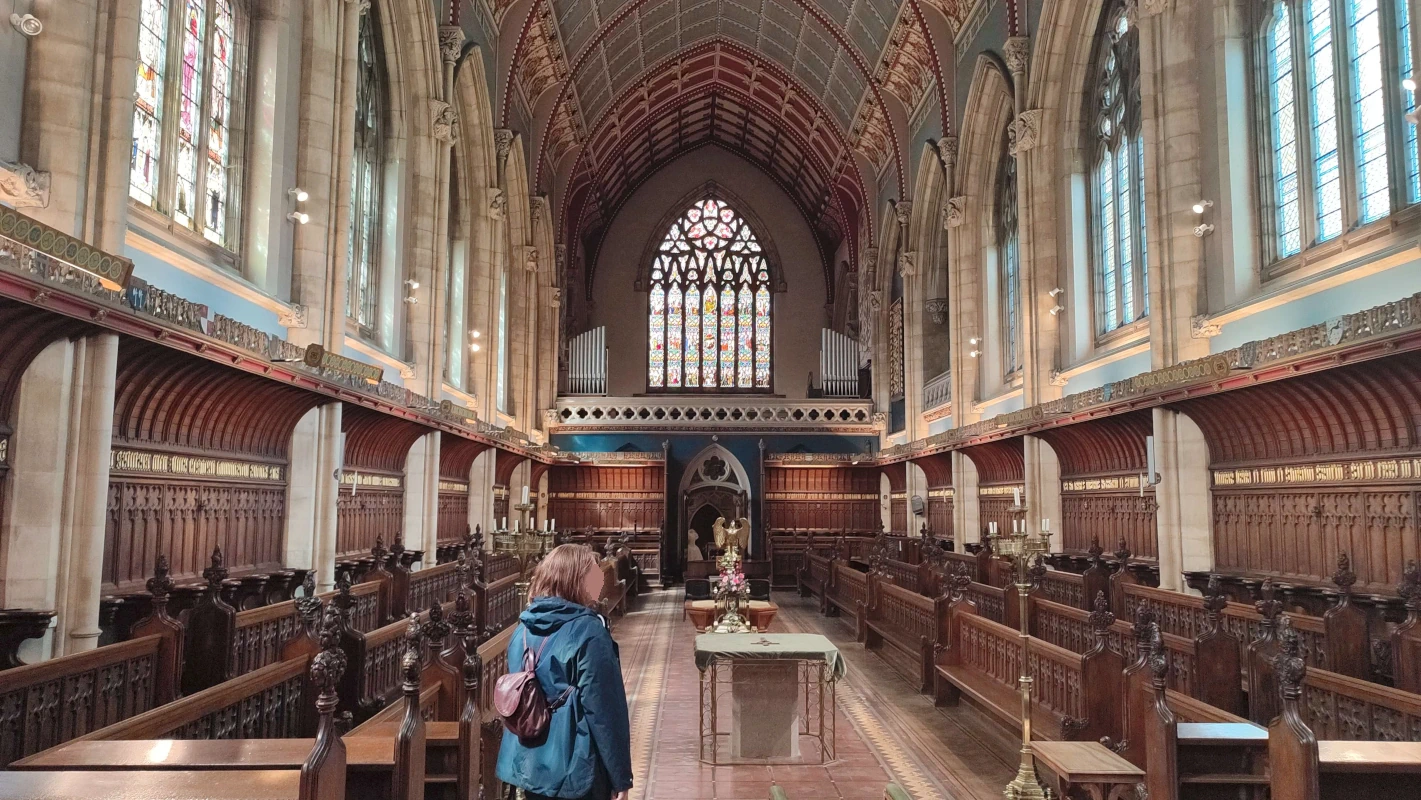
Ushaw Hall’s website plays coy about itself. You can learn that guide dogs are welcome, they’ll be exhibiting interactive “Humanimal” sculptures next month, and that they're very proud of the pun “Ushaw in”, but curiously little about what the place actually is (or was). I went anyway.
To spoil the fun, it’s an old Roman Catholic seminary that was turned into a museum when people stopped being religious enough to care. The entrance makes that well clear; walking up from the car park, the curious visitor is flanked by an ostentatious neo-Gothic chapel on their left and modernist student housing on their right. (The latter remains unmuseumified, too boring to make much out of.)
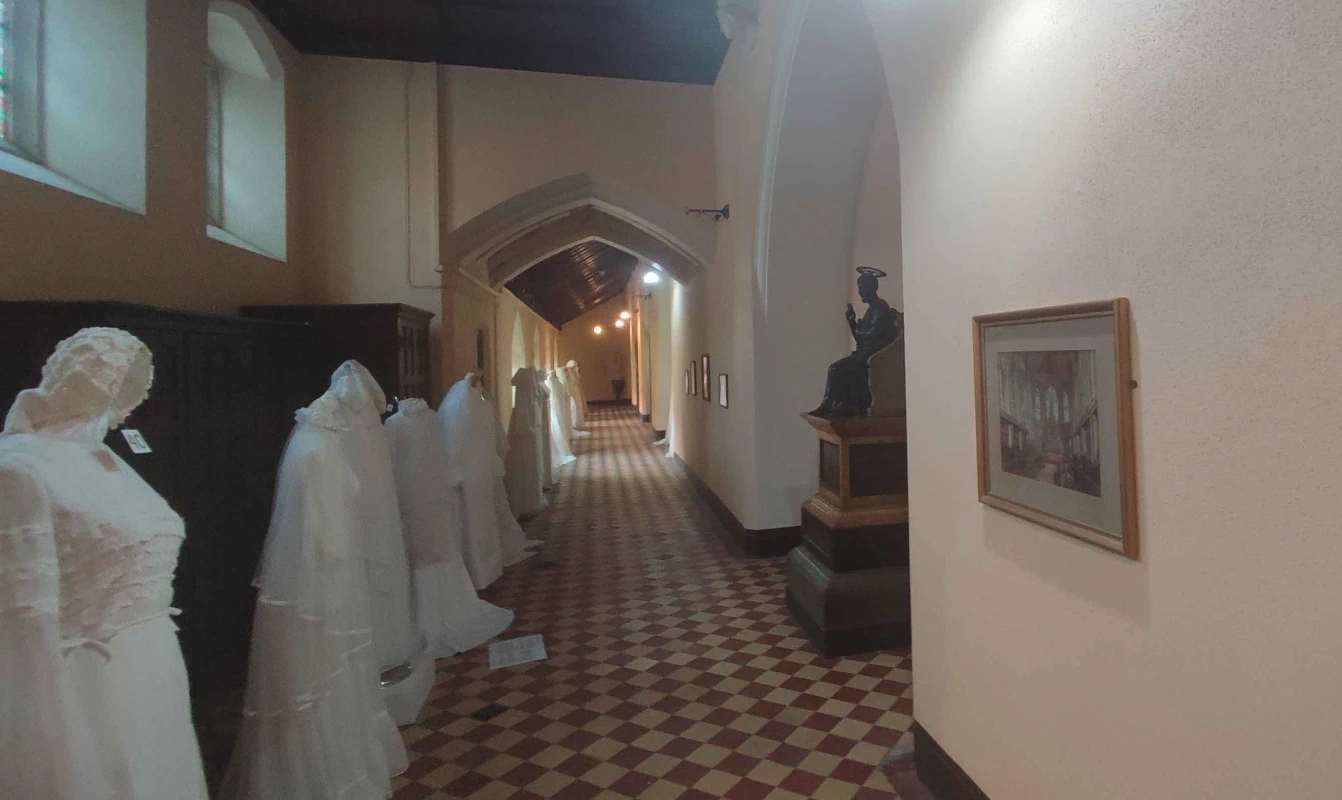
Right from reception there’s an interesting historical tidbit with a bust of Abraham Lincoln himself, who a helpful volunteer told me once attended Ushaw before he decided a more secular political career was right for him. (It was that or boxing, i suppose.) Upstairs is the Presidents’ Hall, whither the stairway looked off-limits enough not to chance it — so never mind that, and let’s instead turn right.1 This takes us down a series of winding hallways with wibbly tiled floor — as of now, an exhibition has lined them with wedding dresses old and new, including replicas of those worn by the royal family, creepy mannequin heads and all.2 More importantly and more permanently, these are the chapels of Ushaw Hall.
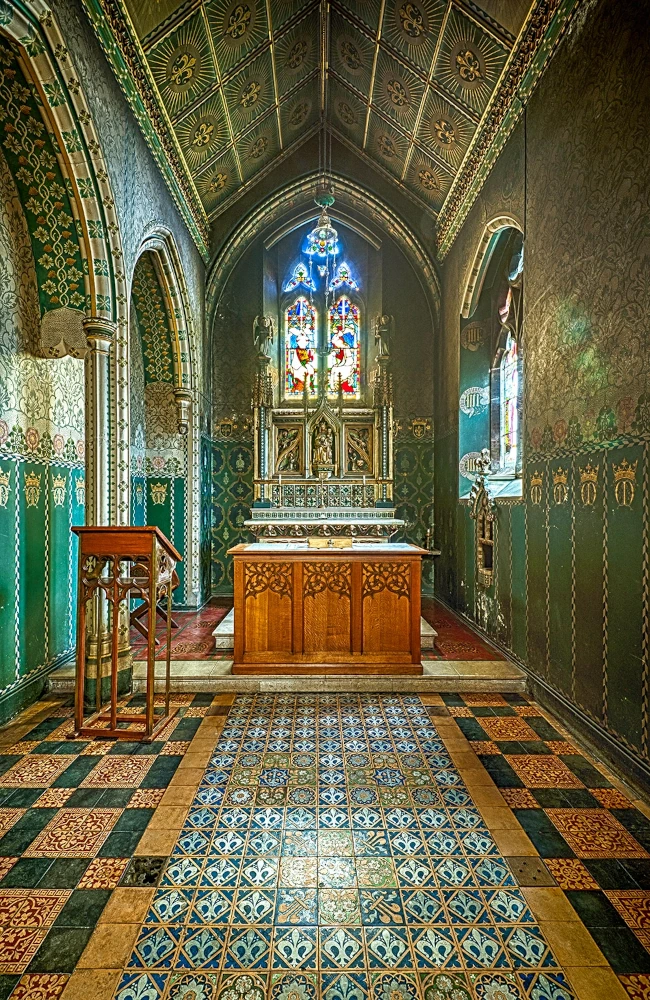
They are beautiful, and have seen better days. The paint peels from a dimly-lit mural in a nook i presume is for choirists. In others, light dances in vibrant oranges and blues through expository stained glass. The brightest of them all, seen here to the right, invites its visitors to pray for Ukraine in a solemn reminder of the times.
These smaller shrines have an intimacy to them that reflects the house’s hush-hush history. First exiled from England, the Catholics settled in the small town of Douai, in the north of France — only to be forced out again by the secular fervour of the French Revolution. Even then, they struggled to find welcome in a staunchly Protestant Georgian England, until a sympathetic aristocrat sold them land in Durham’s secluded hills. The hall itself was built with the façade of an unseeming terrace, only showing its religious nature to those within.
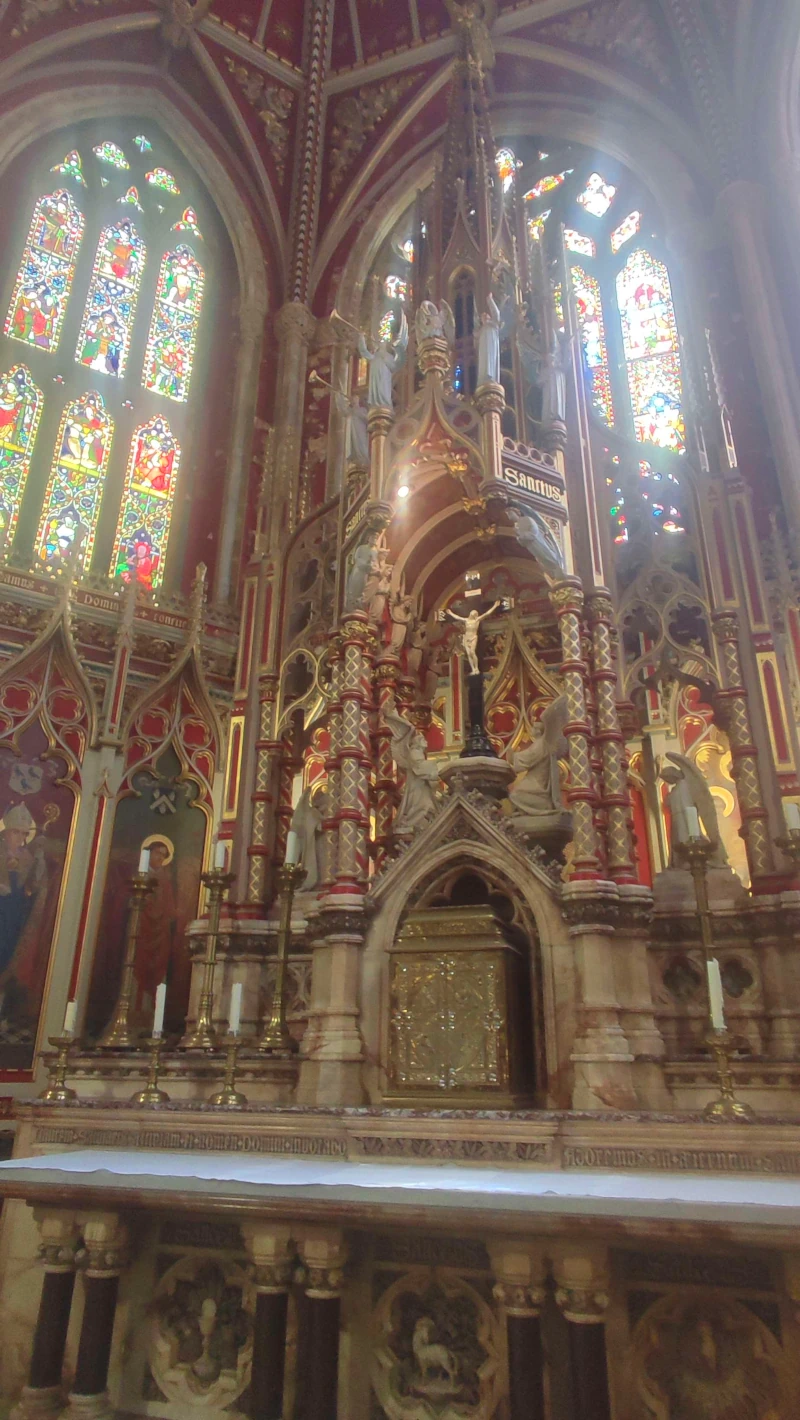
Onwards, then, into the star of the show — the main chapel. Pews upon pews span the long gap between the entrance and the colossal tabernacle, behind which the walls are adorned with what first looks like simple ornament but reveals itself to be tightly-packed black-lettered Latin. You can tell it’s Catholic by the eagle in the middle, the Vatican having never quite given up its attachment to its Roman roots.
…Upstairs is the Presidents’ Hall, whither the stairway looked off-limits enough not to chance it — so never mind that, and let’s instead turn left. Winding at right angles around the central court we first arrive at the library, or what little you can access of it. Management and the university are promising big things… eventually… once they restore everything… and catalogue it… and… oh, sod this, let’s go to the café.
[One hot chocolate later…]
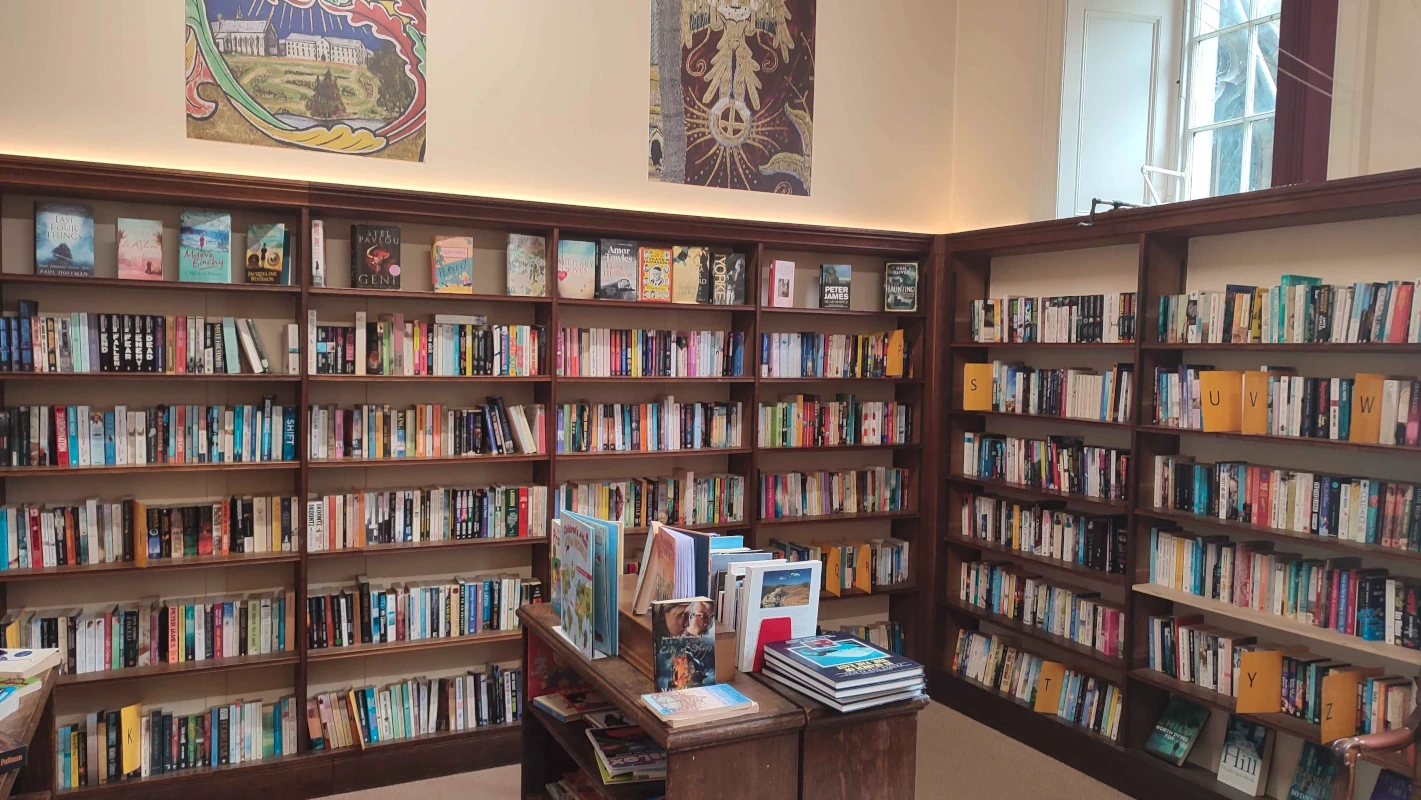
As we were. Further along we find find the mess hall, where aspiring clergy once ate in silence, with only the wet sopping of a hundred English breakfasts reverberating back and forth across the walls. These days it’s used for noisier conferences and school trips, fitted with identikit metal and plastic tables and seats which don’t do much to complement the nineteenth-century décor.
Some time later, past the temporary exhibition of inkjet printouts of old maps3, our trip comes full circle. As i walk home through the well-kempt garden and around the reedy old pond, i might not have been convinced by the seminary’s faith, but i have been convinced of their taste in interior decoration.
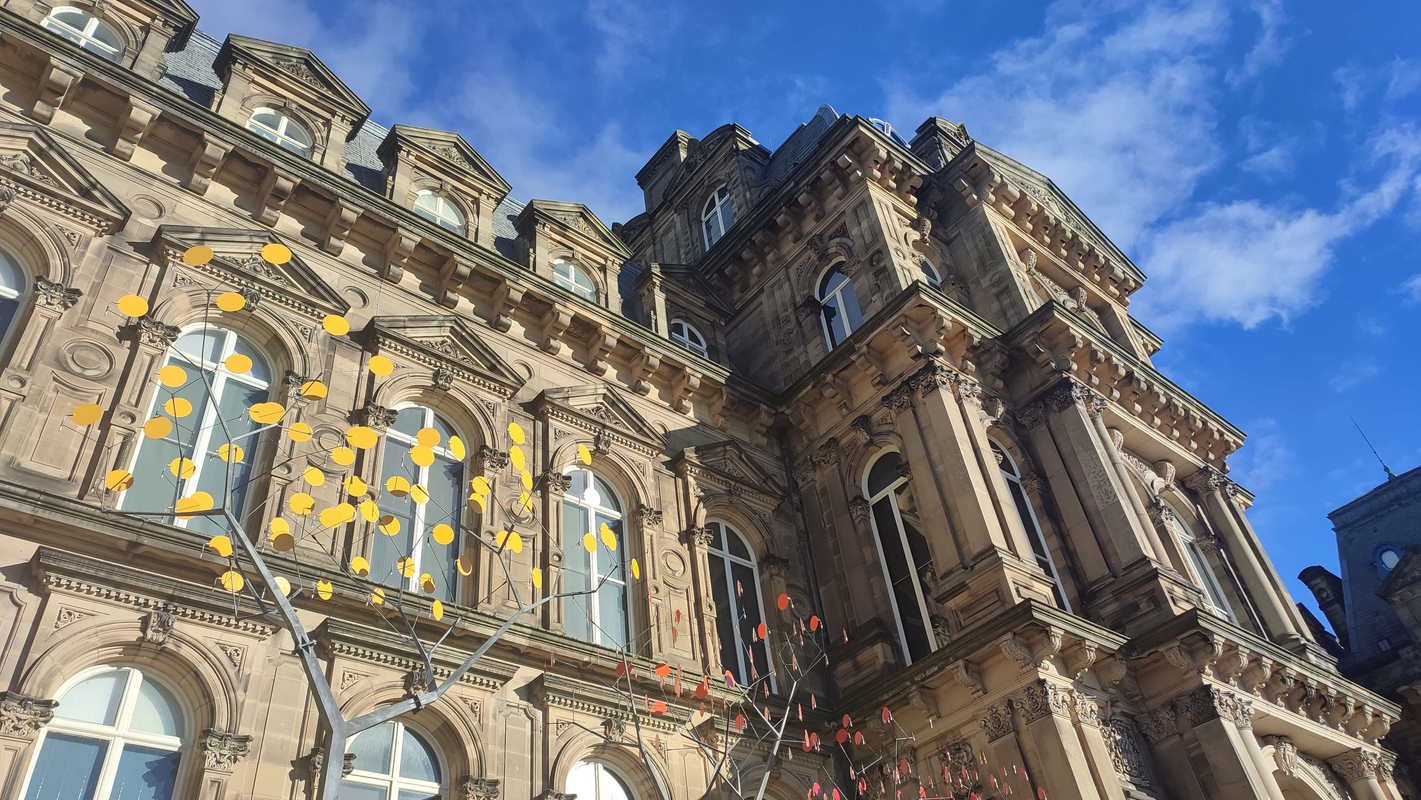
Hello. I’ve been to the Bowes Museum. I thought i might tell you about it.
Housed in a gloriously incongruous French mansion in the small town of Barnard Castle1, it was built to house the art collections of the noble Bowes-Lyons — a family lucky enough to count the Queen Mother herself among their members.
Its collection lies largely parallel to the “main” visual arts: ceramics, fashion, textiles, furniture, and other such things which must account for function as much as form. Most of it plunges headfirst into the latter, a bit frilly even for my often anti-modernist tastes, but i did like this caduceus-adorned wooden cabinet:
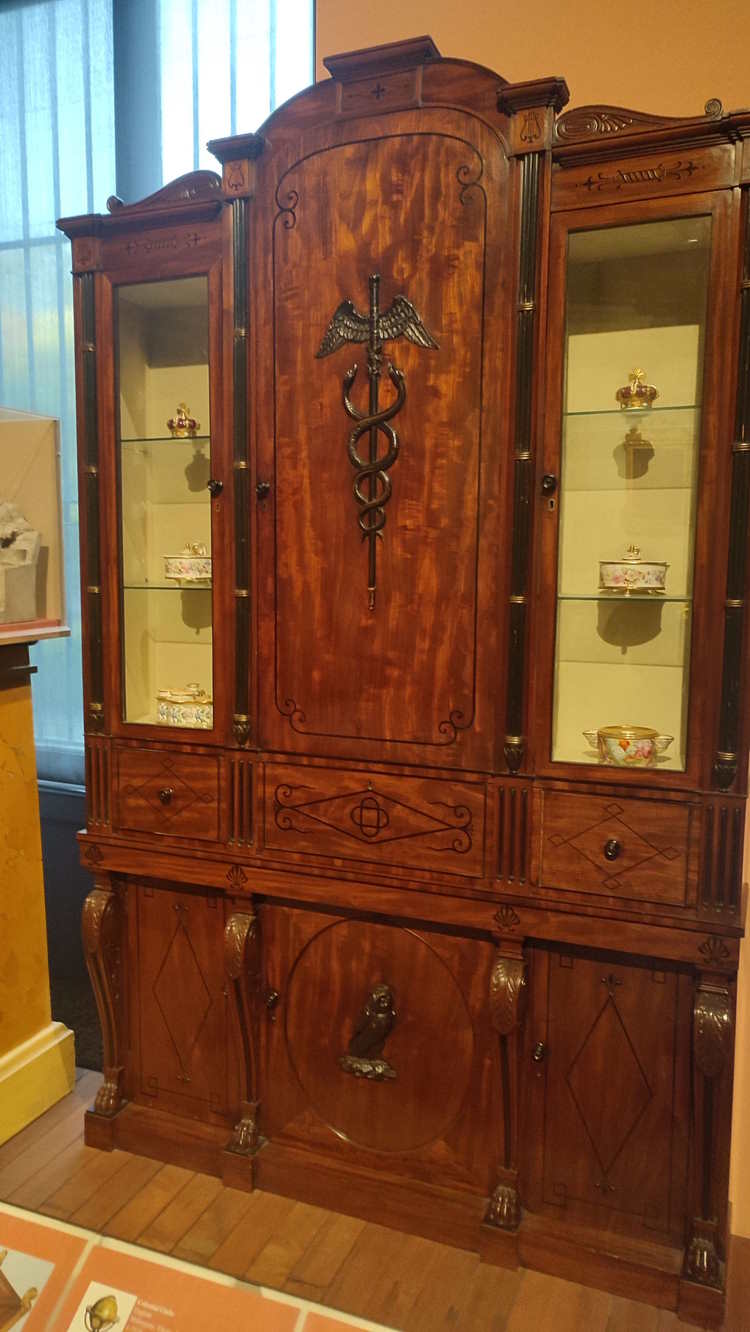
The star of the show here is the Silver Swan, a gorgeous eighteenth-century automaton which preens and sways on a bed of glass water. Unfortunately, it’s broken, and the closest you’ll get to see it is its dismembered corpse awaiting restoration, so [raspberry noise]. You can, however, see their exhibition on its legacy, which houses a wonderful collection of modern animatronics made by crafters and tinkerers from all over the world, like this 10/10 pianist:
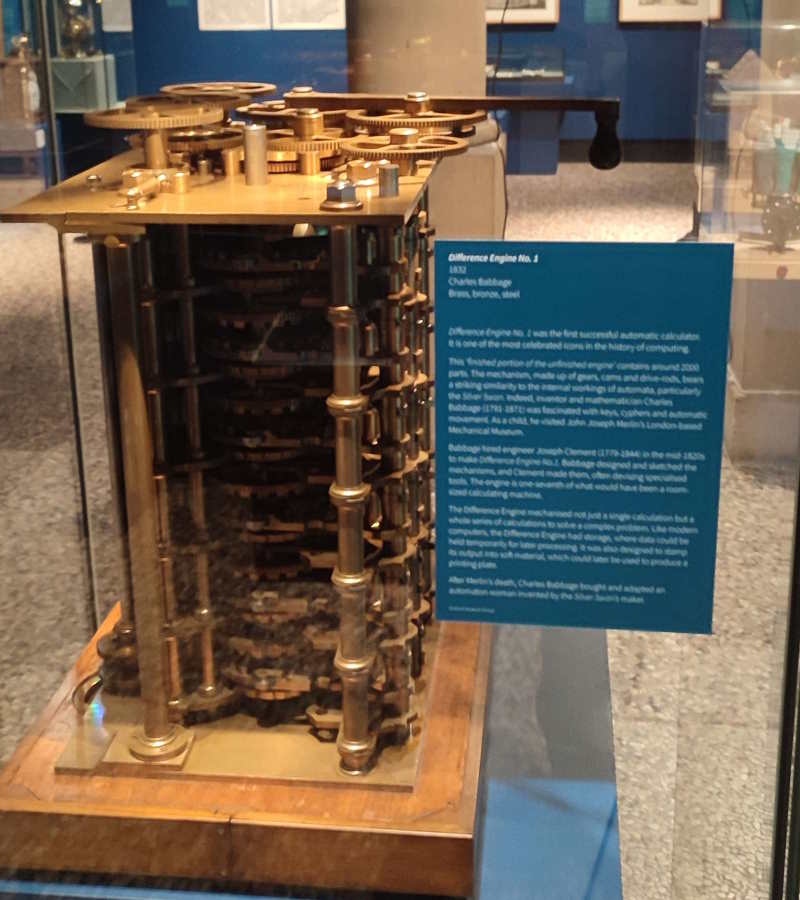
There are a few items which don’t fit into the above. They’ve managed to snag some real Goyas, Canalettos, and El Grecos. (Los Grecos?) They even have Charles Babbage’s Difference Engine, somehow — i assume it’s on loan from London?
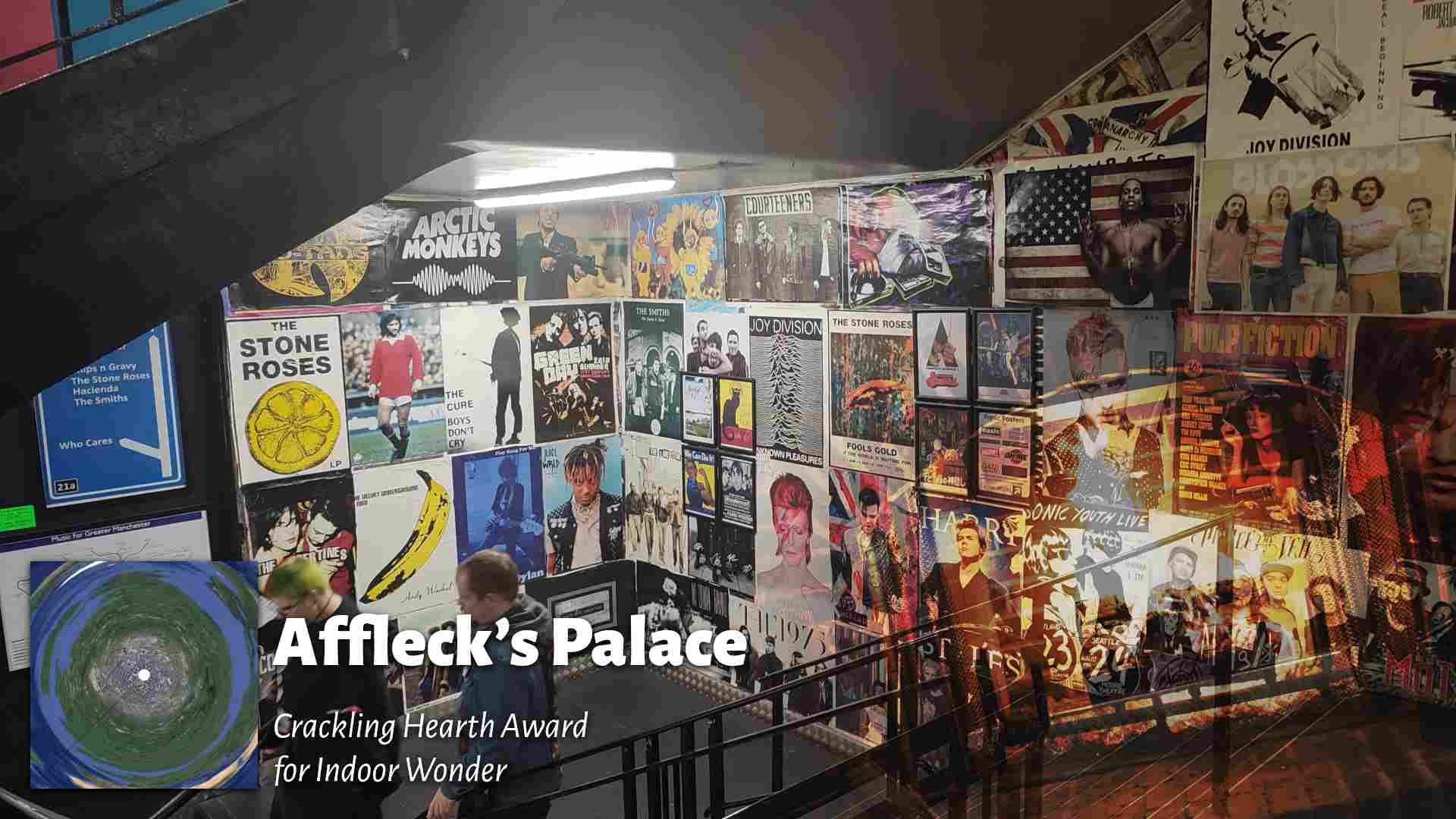
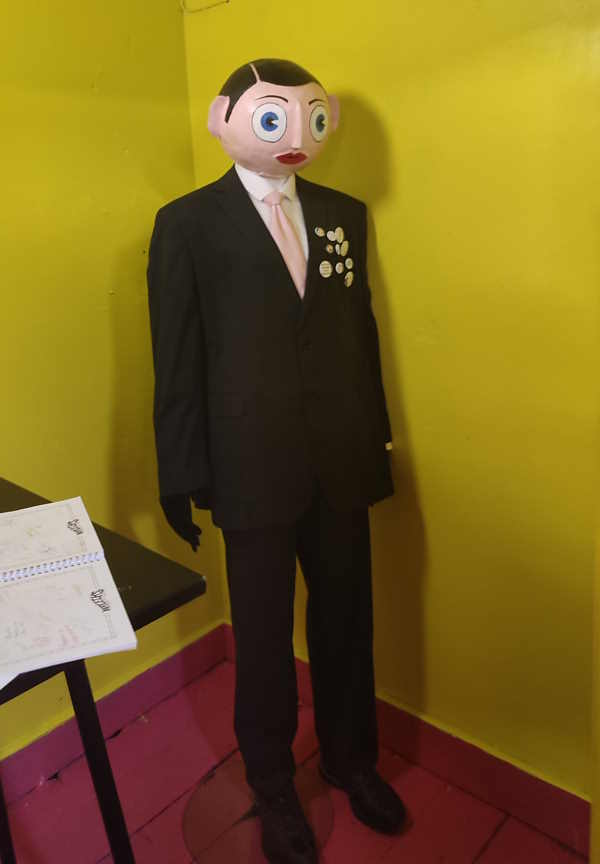
It has now been over three months since i visited the city of Manchester. What once was a vivid memory has been obscured by the fog of ever-ticking time. But there is unfinished business to be dealt with — so let me sing to you, dear reader, of Affleck’s Palace.
Cottonopolis’ pop- and counter-culture mecca found its place in a bourgeois defunct department store; its hollowed husk has been stuffed beyond recognition with dozens of stores over four floors, from fashion to cassettes to Hatsune Miku–themed fizzy pop.
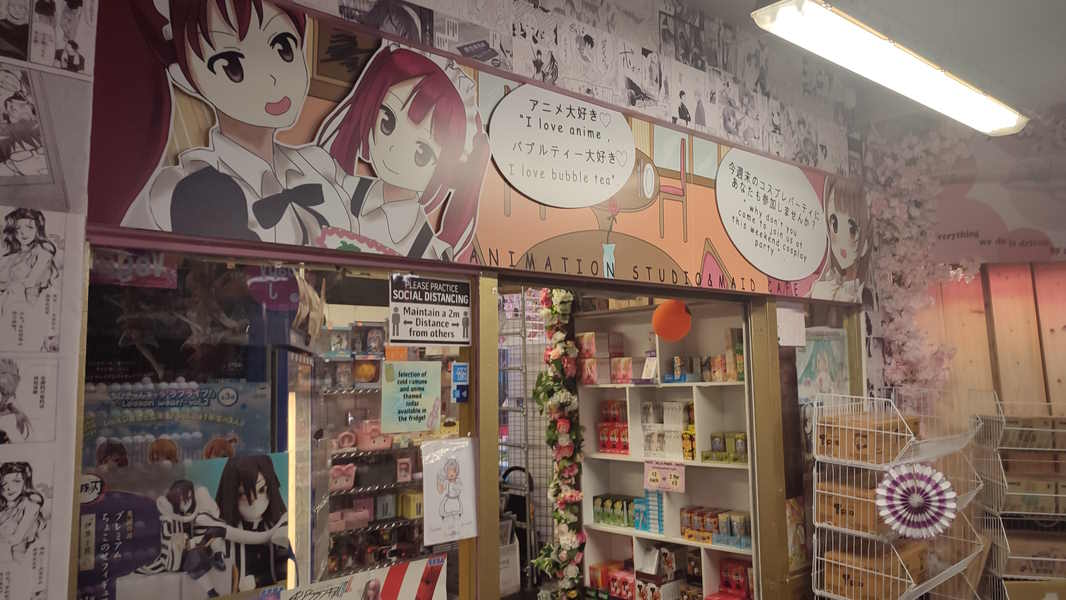
It’s an absolutely disorienting place to get your head around. The meme up in Newcastle is that the Grainger Market is an Escherian nightmare where nothing is ever where it was last time, but Affleck’s is a whole other level (three of them, in fact). Stairs lead to more stairs which lead to corridors which somehow lead back to the same stairs. It took me five goes to find the cassette tape store, and when i did, it was closed for a fag break. It’s the sort of place where a non-specifically foreign woman who you never see again sells you a cursed trinket that brings ruin to your family.
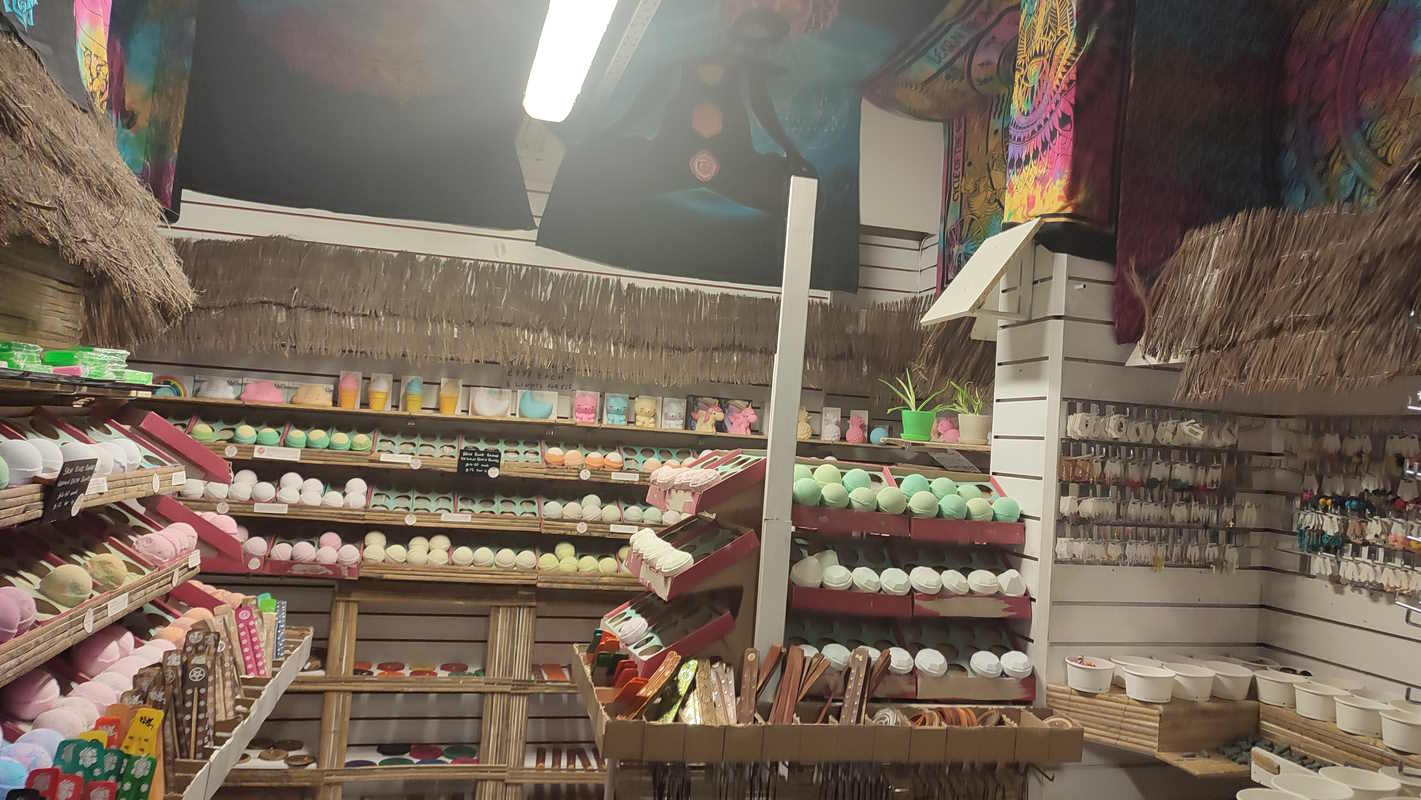
I can only tolerate hippie shit in small doses, and, thankfully, this little bath-bomb dispensary was the perfect small dose. Incense sticks? Tie-dye decorations? Sure, why not.
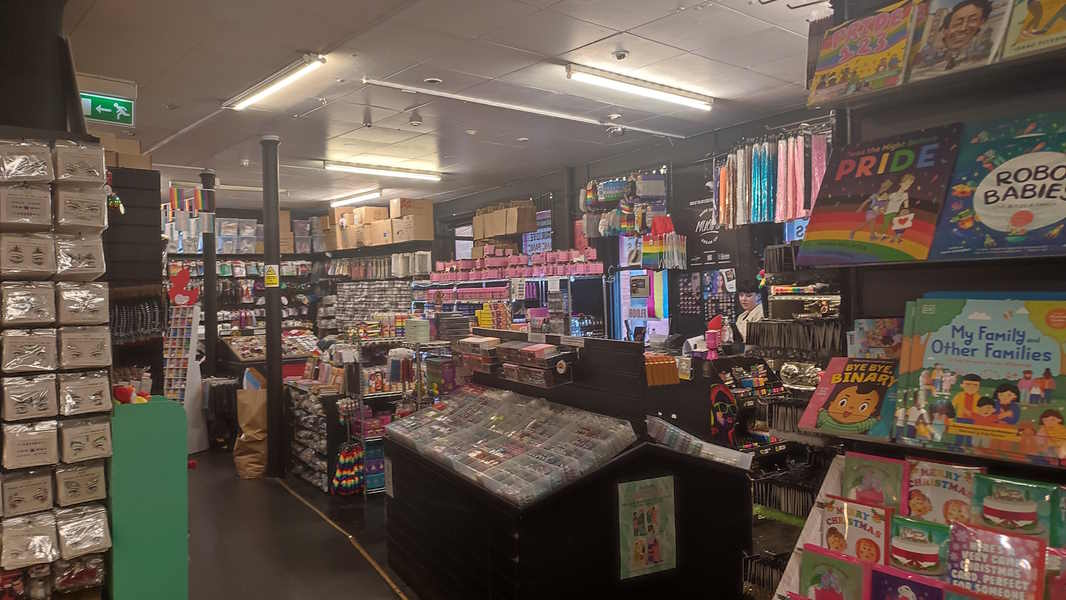
This shop claims to be Europe’s largest LGBT specialty store, which i’m sure is true, if only because half of Europe has the same attitude towards gay and trans people as a moderate Westboro Baptist.

And if counter-culture isn’t your thing, there’s enough stalls hawking Disney merchandise to keep you occupied. (I clapped when i saw the thing i know!!!)
I hardly even remember getting in or out of the building, which leaves me at a loss for how to end this post. Maybe it’s more of a feeling than a real place — you just wake up one day, teleported inside, and have to complete a vision quest to buy a cone of rose-flavoured ice cream to find out how to leave.
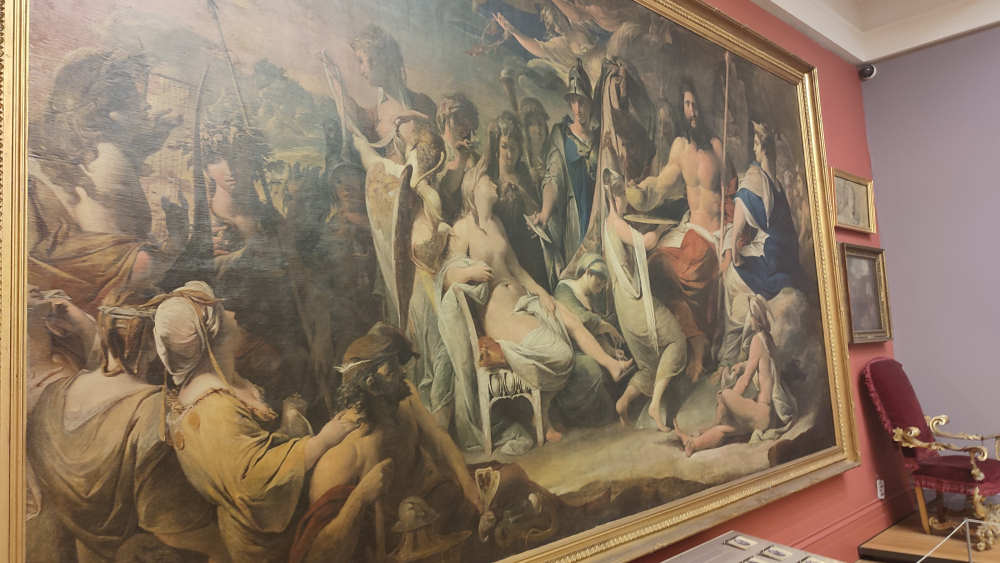
Manchester is not particularly renowned as a home for the aristocracy or patrons of the high arts, so i was pleased to discover upon a visit that the Manchester Art Gallery is one of the finest of its kind.
The Mag (as nobody calls it)’s success lies not in the size of its collection — it’s no larger than my local, the Laing — but in its presentation. Like many museums, its curators have lately been making efforts to diversify their collections and make them more relatable to the average yoof of today. It’s a process that can often come off as haphazard and rushed1, but the team at the Mag have pulled it off with care and respect.
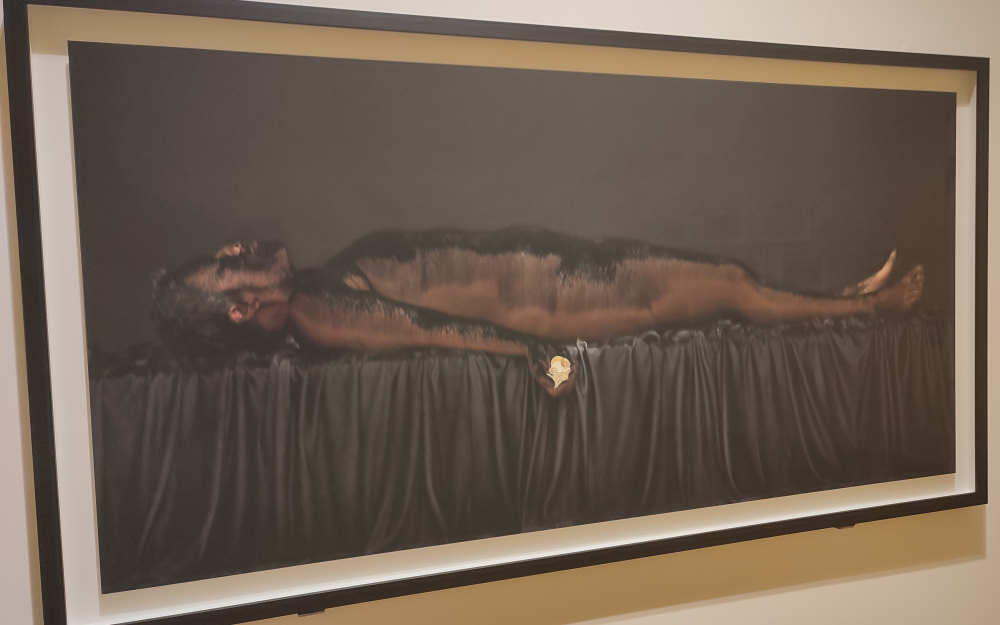
Newer works are dotted in each gallery in such a way that they complement, rather than denigrate, the greats of old. A visa rejection letter from a group of Pakistani artists hangs alongside Victorian paintings of eastern caravans; where a gallery about protest and revolution could have added some shrewd, vapid letterpress and called it a day, the museum’s curators have instead chosen to incorporate a thoughtful self-portrait by a South African painter, made in the wake of the Marikana massacre.2
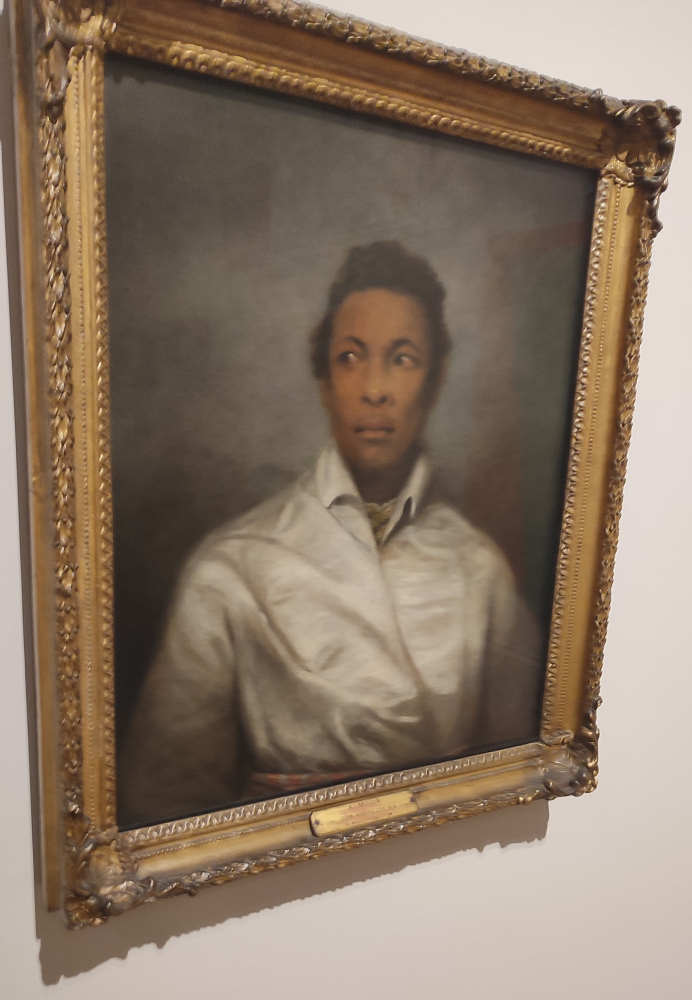
The captions accompanying each artwork face a similarly complicated task. Be too conservative and you’ll disappear up your own arse into a world of romanticist masturbation; be too reactionary and you’ll come off as cloyingly didactic, engaging in pseudohistoric iconoclasm for iconoclasm’s sake. The Mag hit a stroke of genius here: after a brief description in the typical style, the captions adorning prominent works also include conversations and thoughts from a variety of perspectives, be it historians, curators, or the artists themselves. It’s a brilliant way to further inform the visitor without beating them over the head with one opinion, alienating them with arcane academese, or leaving out unsavoury histories.
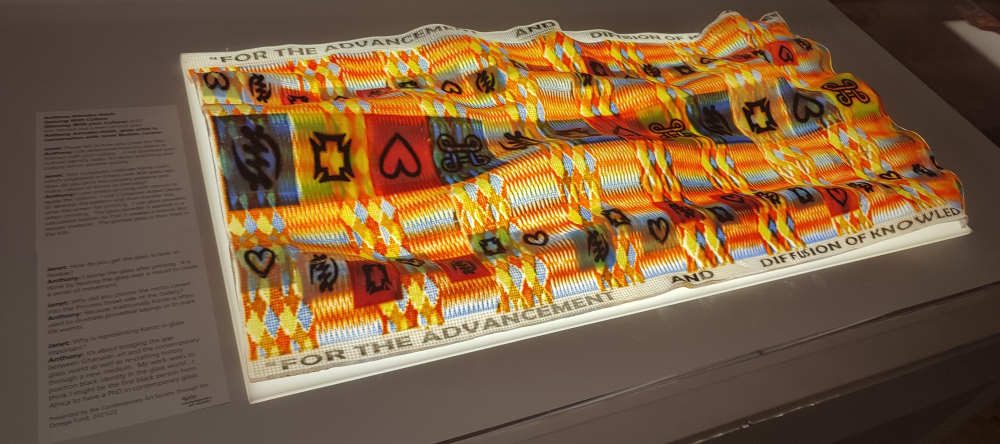
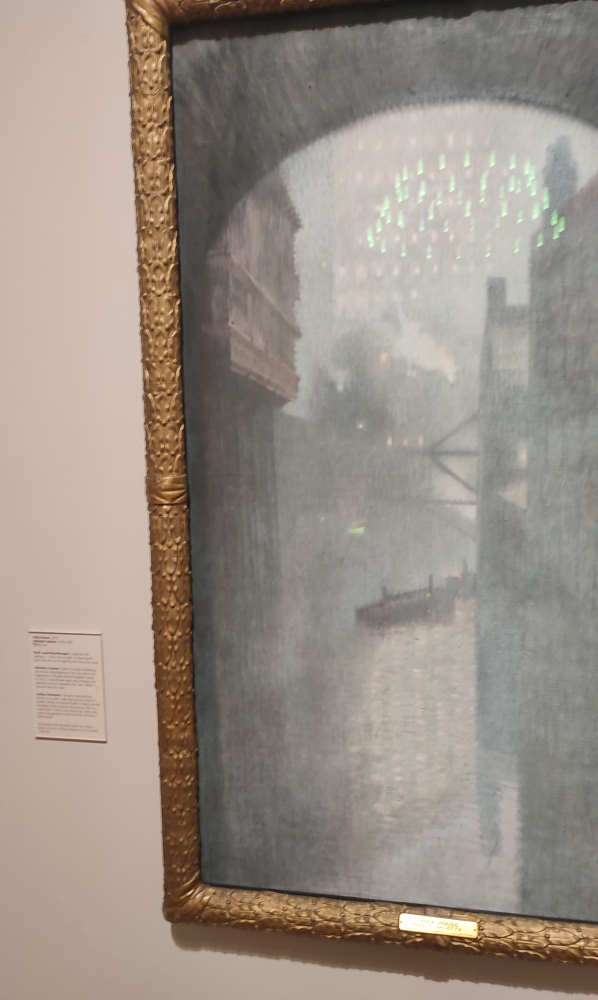
Other highlights on the lower floors include a portrait of the early black tragedian Ira Aldridge (the very first work in the museum’s collection, which rather surprised me coming from the people of 1858), a Ghanaian tapestry that i was surprised to learn was actually made of glass, and a lovely painting of an industrial scene lit by hazy fog whose name — to current me’s infuriation — i neglected to include in the photo, taken from an angle so inconvenient that reverse image search returns nothing of relevance. Past me is a bastard and i’m killing him when i get the chance.
Upstairs sit the gallery’s temporary exhibitions. The most prominently advertised was on the topic of the history of men’s fashion, something i regrettably could not get myself to muster up any interest in. I’m sure it’s quite interesting if that’s your sort of thing. The other (smaller) exhibition sits in a surprisingly grand hall which, from what i can tell, normally houses the museum’s pottery galleries, and it’s about tea. No wait come back i sw—
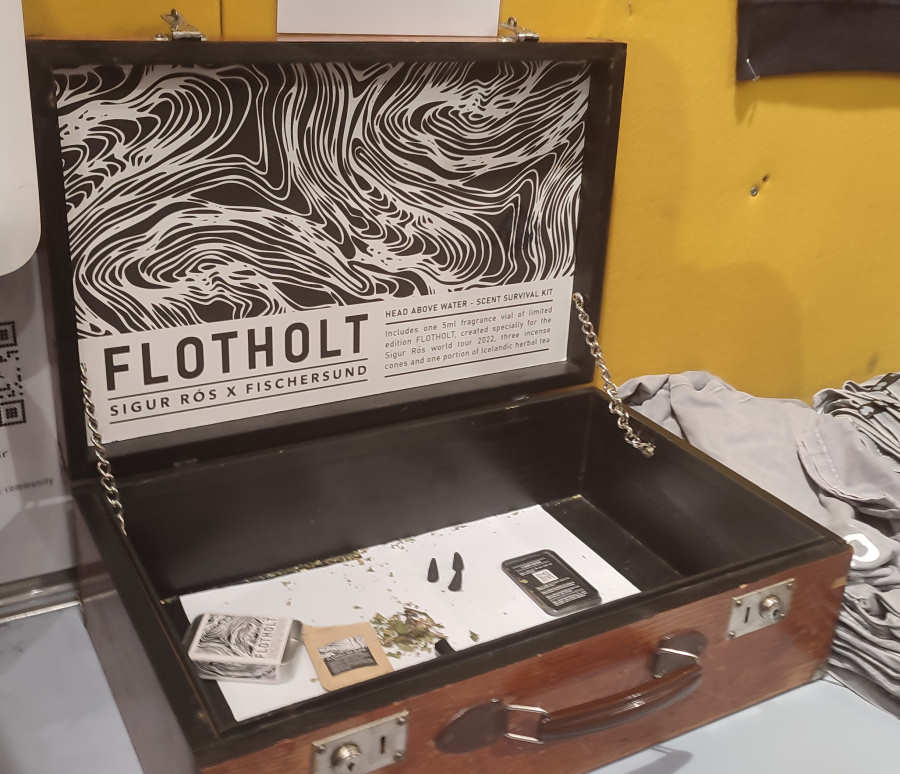
I jest, but there really is some fascinating stuff in there. The room’s cabinets are packed with advertisements, old jugs, and all sorts of other things detailing how hot drinks have shaped Britain and the world over the years — from sparking conversation to funding colonisation. But there was one thing that stuck out to me the most. A newly-created work of art, perhaps meant to inspire some thought or another in the viewer, but that our whole group agreed could only be described as one thing:
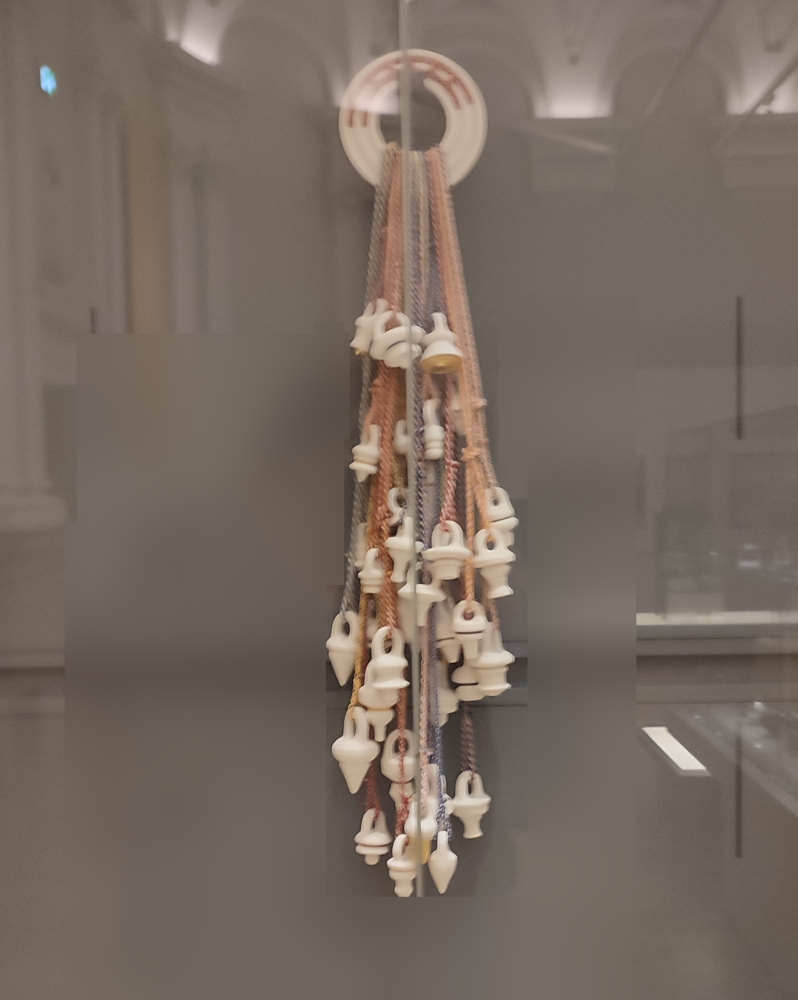
PS: I had to ask what the abbreviation “dbl” (“double”) on the signs for upcoming trams meant. My poor exurban soul simply could not comprehend the idea of a transit system that consistently ran so punctually — i had been thinking it stood for something like “delayed by late”.
PPS: This was meant to be the last post in the series, but my rambling about the gallery got so out of hand that i thought i’d spin off its intended complement into its own part. Tune in next week3 for one last dispatch from Affleck’s Palace.
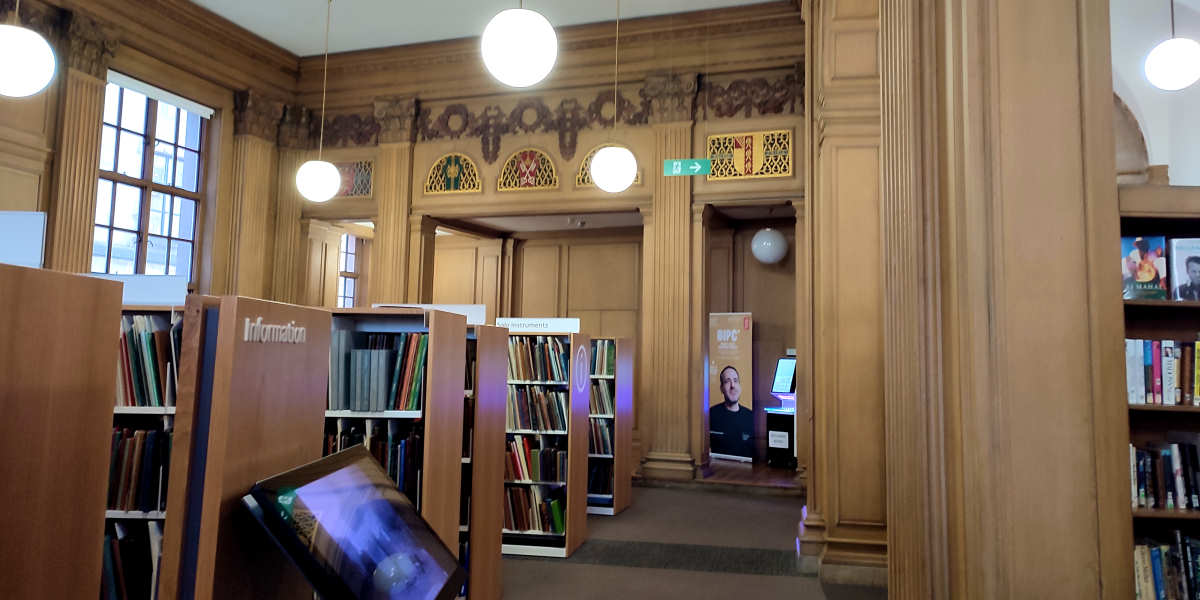
Manchester’s influences on British culture and life spread far and wide — music, politics, industry, TV — but it’s fair to say it’s not exactly renowned for its literary output. And yet, nevertheless, i found myself wandering the halls of two great libraries in Cottonopolis.
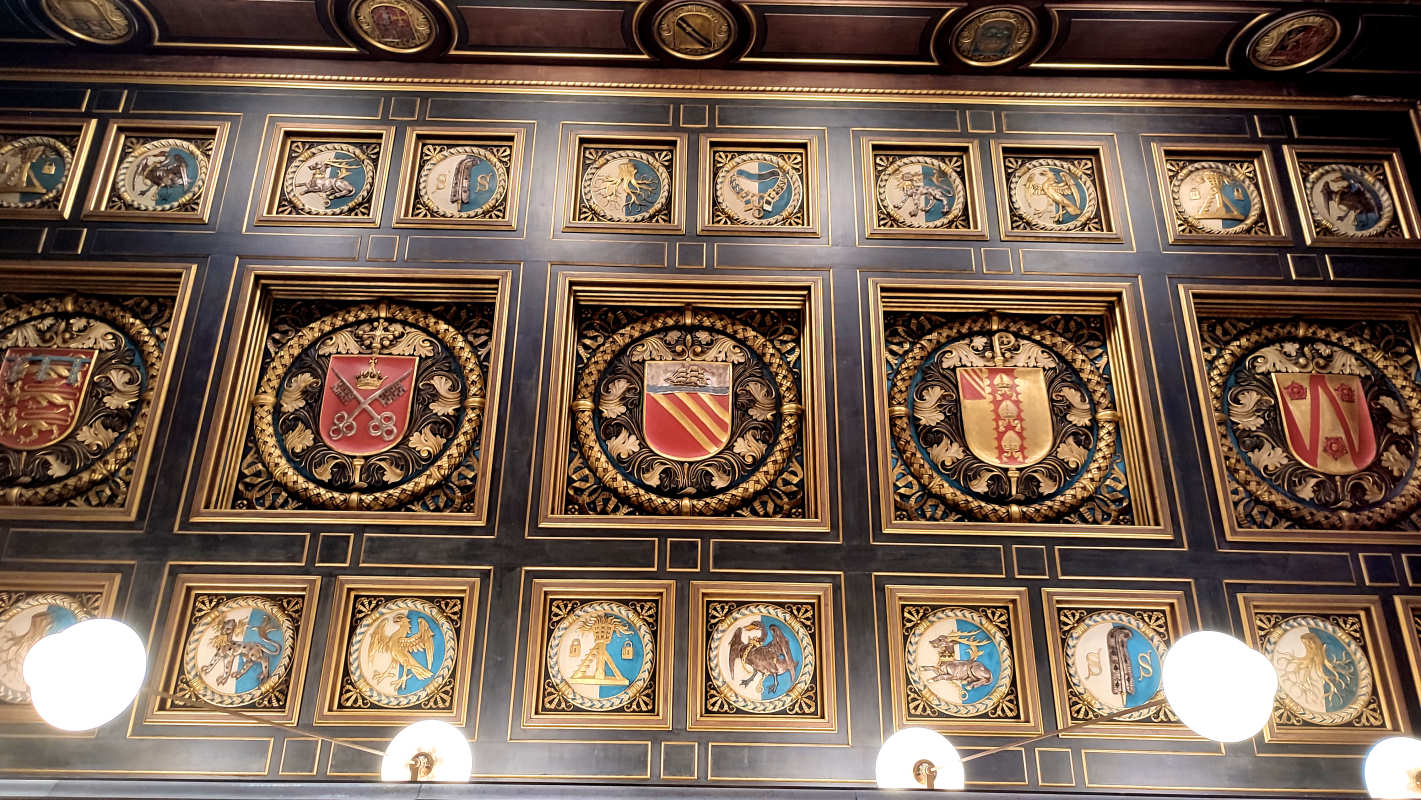
The first and grander of the two is the Manchester Central Library, whose imposing hall first squat itself upon St Peter’s Square in 1934. Upon walking in, there are a number of things the discerning visitor might notice. Hir eyes might wander upwards to the expertly crafted stained-glass window of Shakespeare and his protagonists, or all the way up to the ceiling, generously coated with the arms of authorities priestly, princely, and popular. Or, if our hypothetical visitor is a Geordie, shi might instead notice some things that the rest of the country’s eyes would gloss over: clean, well-designed signage; sleek open space; swooshy modern æsthetics… All paid for out of the council’s pockets.
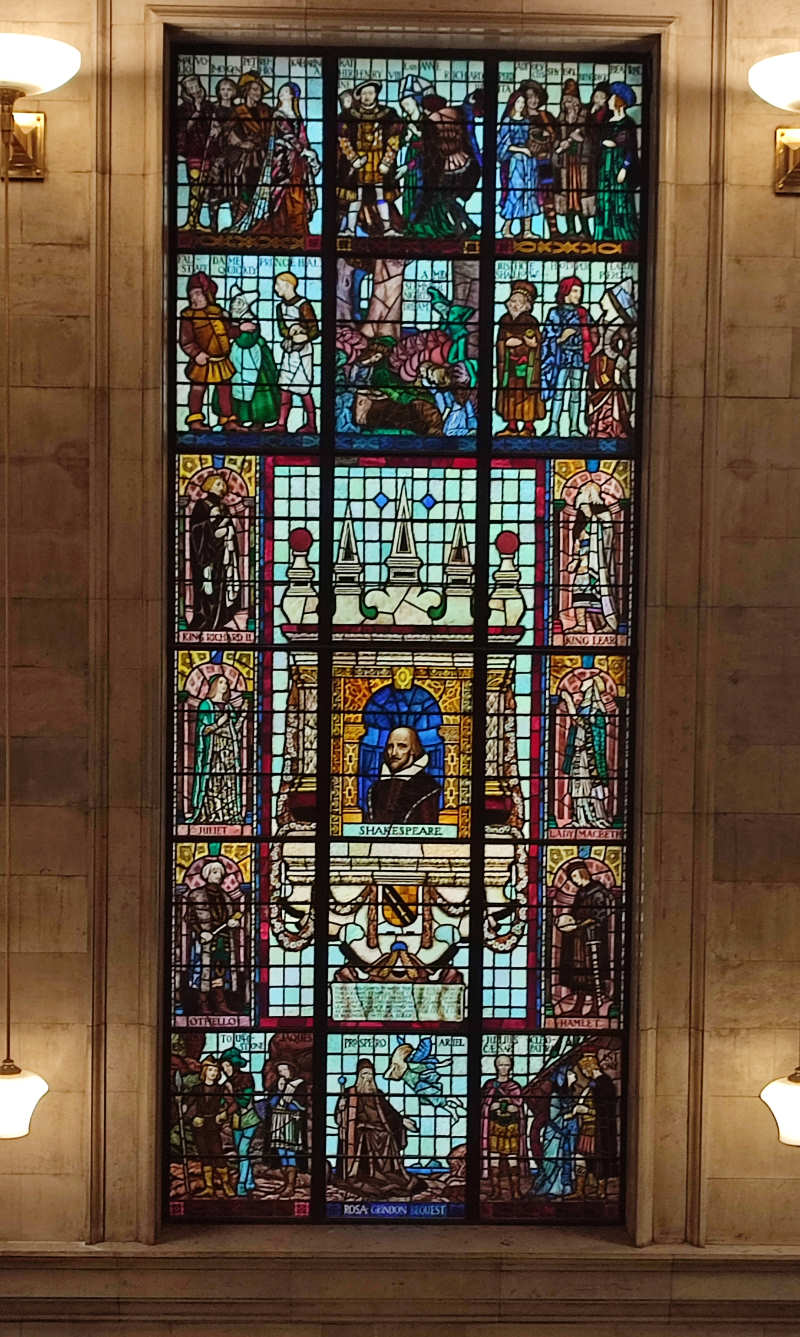
There are no decaying bridges, no council computers running Windows XP, no decade-old untouched brownfields. When ministers talk a big game about “levelling up the North”, this is the North they’re talking about. Cumbria? Newcastle? Middlesbrough? Isn’t that in Scotland? It’s best not to dwell on these things (for cynicism doesn’t do the mind good), but one can’t help but feel like they’re rubbing it in.
The Central Library is a treasure trove. It houses an impressive collection of musical paraphernalia, from sheet music to encyclo-glee-diæ to biographies of Saint Noel Gallagher. Its central atrium is home to the “archives plus”, where Mancunians can drill into their city’s history without needing to be fluent in acadamese. The reference library on the upper floors is so tightly packed that it uses mechanical bookshelves which reveal themselves with the push of a button. By all accounts, it serves the people of Manchester well. Perhaps that’s the problem: for a tourist like me, it’s hard not to get jealous.
The Portico Library is an older, humbler affair, constructed at the height of the industrial revolution and taking up but the first floor of its classically-inspired building. Anyone can enter, but i’m afraid the full collection is a members-only joint; my group were just here to check out a book a family friend had paid to be restored. (A page fell out while we were handling it. Whoops!)
While the back catalogues might be off limits to us plebes, there’s still plenty to pique the passing itinerant’s interest. The central hall is still decorated in its original homely Victorian fashion, having a delightfully idiosyncratic way of catalogueing its books: “biography”, “travels and voyages”, and “polite fiction” (a vestige of the time when the middle classes were still joining “polite” society).
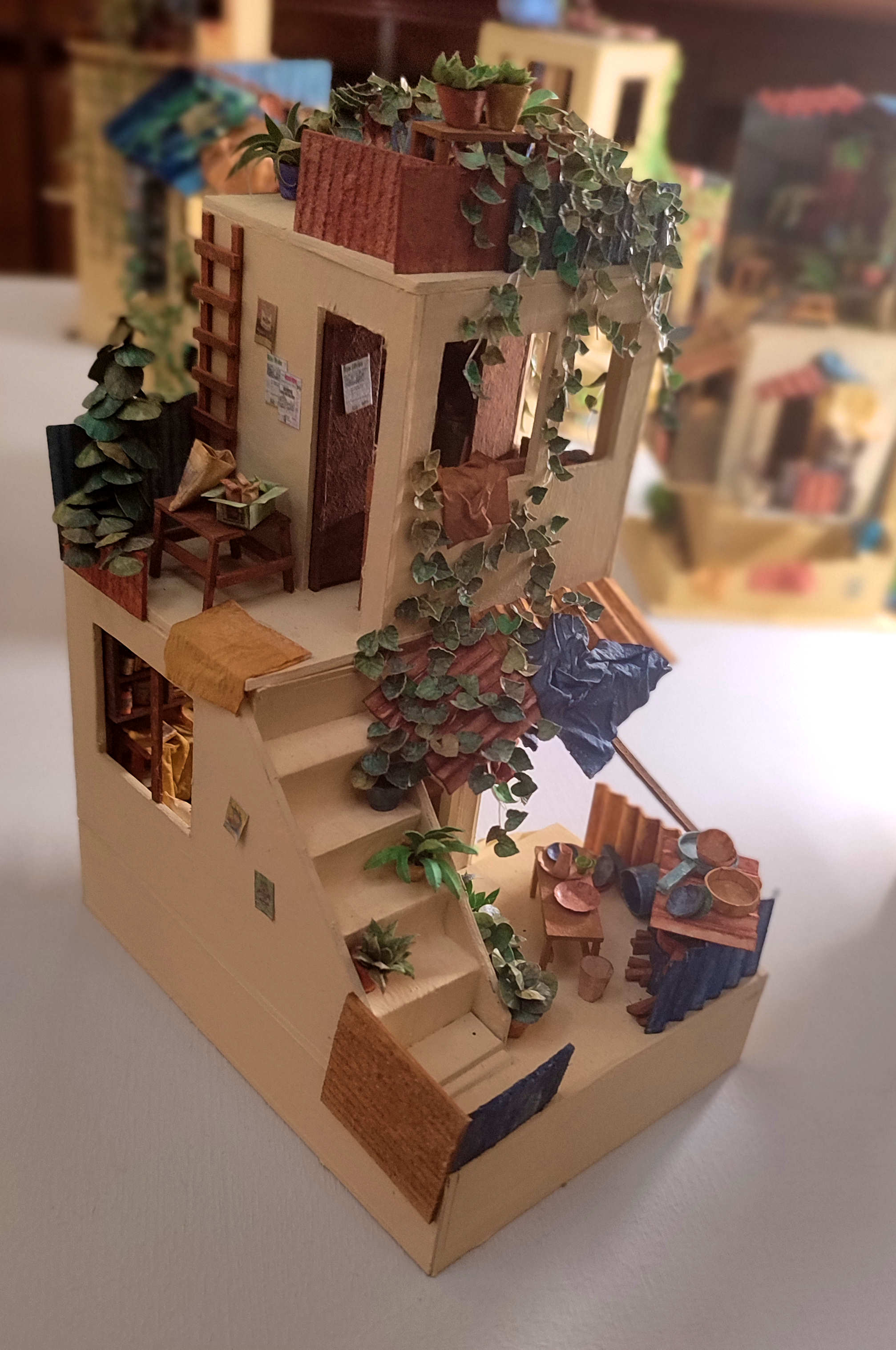
An exhibition of architectural art circles the middle seating area. While much of it was the usual arty bollocks, i found myself captured by the adorable cardboard houses of Thu Le Ha, an artist and volunteer at the library. Ms Ha has a vanishingly small online footprint, but i hope she keeps at it — this is the sort of thing the world needs more of! Cute little whimsy.
And that’s all i wrote. Next up, some less wordy centres of Mancunian culture.
P.S. On the way back from the Sigur Rós gig, we bore witness to a throng of teenyboppers and weary parents making their way back from a different gig held at the famous Arena. What could possibly inspire such turnout from such a young crowd: Taylor Swift? Olivia Rodrigo? Some K-pop act i’d never heard of? Nope — they were there to see the Backstreet Boys.
Some things never change.
Hello. I’ve been to Manchester. I thought i might tell you about it. Wait no come back i promise this isn't just showing you my holiday ph
The last time i went to that wonderful southern city, i was hardly ten years old, and hadn’t much of a chance to explore — a mistake i was itching to rectify this go around. Over the next few days i’ll be sharing some of the things i saw, heard, and third verb goes here.
First things first, our trip’s raison d’être: Sigur Rós were on a world tour, and though they might not have been schlepping up to Newcastle, i sure as hell wasn’t going to miss the chance to see them.

Sigur Rós are a post-rock band, and their gig made clear that it’s with a strong emphasis on the “post-”. It was an all-seated audience, with vanishingly little banter from the band (one has to imagine they’re not 100% confident in their English), excepting a brief pantomime bit at the end of „Andvari”. No complaints from me, though: a laid-back, almost classical atmosphere quite befits their ætheral soundscapes. I mean, could you imagine people going wild in the pit to „Vaka”?
As „Popplagið” came to a close and everyone shuffled out the venue’s doors, i noticed a curious item at the merch table: an officially licensed Sigur Rós tea and incense kit. What a world we live in. (I didn’t buy it — there was only one left, and i probably wouldn’t be the one to make the most use out of it.)
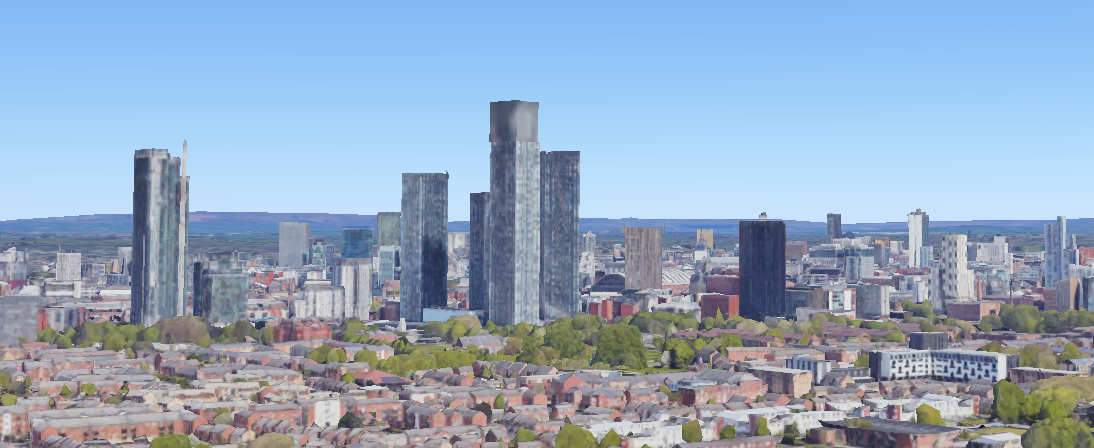
As an official, Lisa Nandy–certified resident of a Town™, i was left slightly dumbstruck and intimidated by the dense forest of tall buildings that is Manchester’s city centre. Sure, it’s not like i’m a stranger to the idea of a city, but of the two big cities i have most haunted over the years , Newcastle only has a stumpy luxury apartment and a few council houses strewn about the suburbs, while Amsterdam’s skyscraper district is sectioned off behind the other side of a ring road, far from the centre of town.
But Manchester? Nay — Manchester is England’s second city, and they’ll show it any way they like! Dozens upon dozens of architectural phalli jut up from the ground in all directions, a veritable orgy of capital. I pray thee, have we as a species learnt nothing from the tales of Icarus and the Tower of Babel? Nothing‽ This is hubris writ large, i tell you!
Or, you know, something like that. Their green spaces don’t even have cows.
They both serve the same purpose, really, but i just want to rub in that where we up north has a fully-fledged metro, Manchester merely has to do with trams. Sure, ours might be delayed every five minutes, and theirs might be uber-reliable and extend throughout the urban area, but who’s really winning?
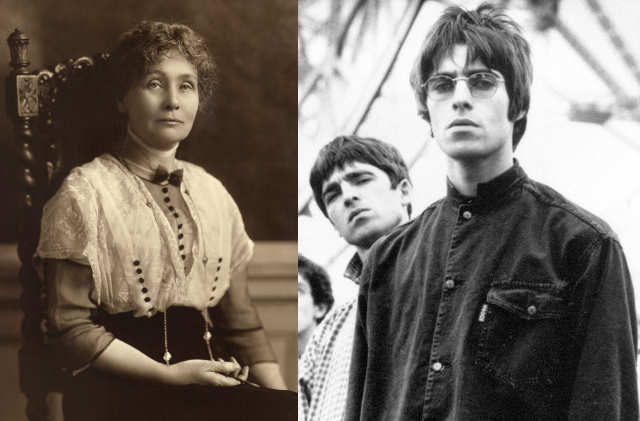
Manchester has no shortage of iconic residents — Morrissey, Danny Boyle, Burgess, Wanksy — but Mancunians have taken it upon themselves to idolise two people above all else. Everywhere you look, there are statues, plaques, and posters in their memory.
The first is Emmeline Pankhurst. An early leader of the suffragette movement, she and her allies often used violent tactics to get their way, from breaking windows all the way up to arson. You can see why the left-wing, industrial city, birthplace of the labour movement, would be proud to honour her.
The other is Noel Gallagher.
Naturally.
On a hilltop in County Durham sits the Penshawi monument, a nineteenth-century folly built to commemorate the late Earl of Durham. It’s always been on my bucket list, but it’s a bit of a pain to get to via public transport, and i’d never found the time — last week, though, i found myself with some time off and decided to make the trip. I’ll let the pictures do the talking from here…
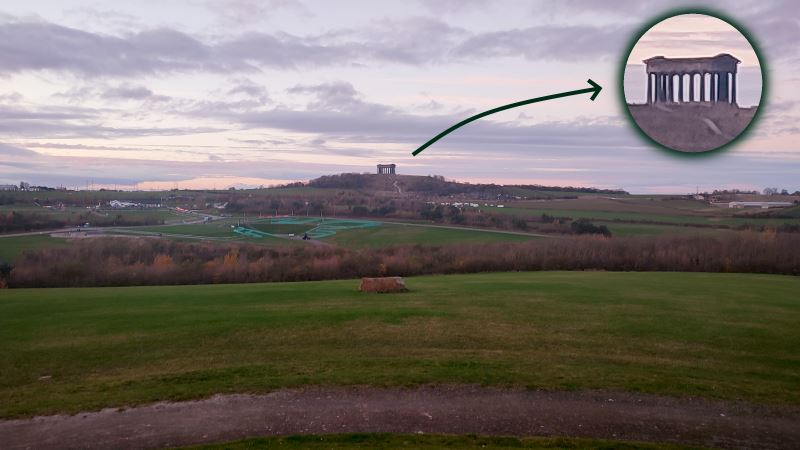
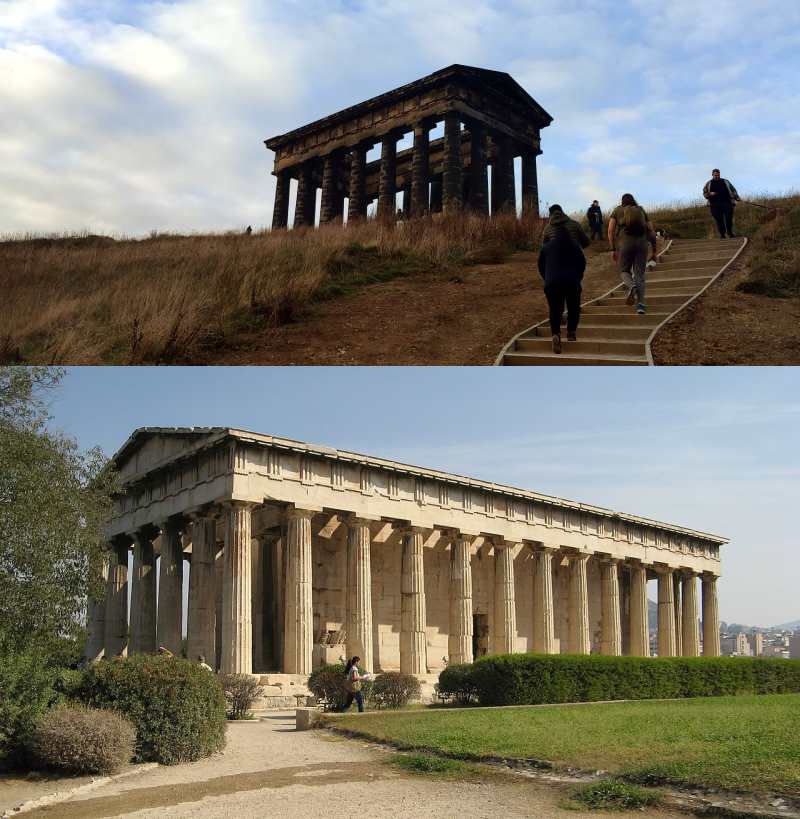
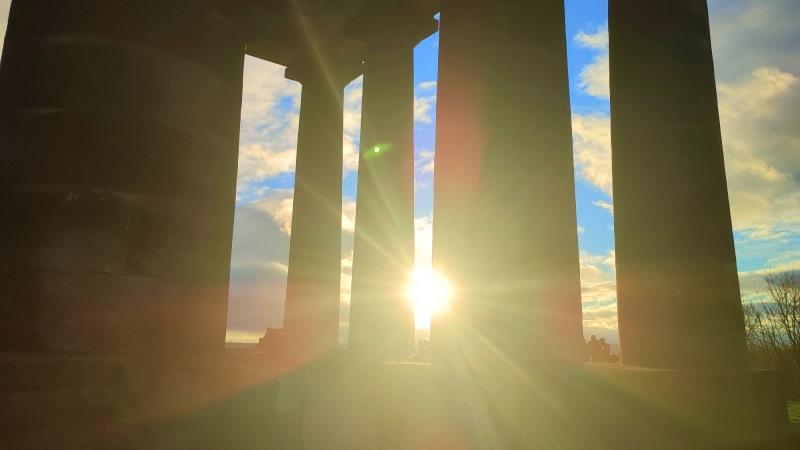
The industry town of Blyth is bordered on four sides by sights iconic of the Northumbrian experience. To the north lies the eponymous River Blyth, carving out a respectable third to the Tyne and Tweed in how it has shaped the course of the county’s history. To the east, the awesome North Sea ebbs and flows, enticing herds of families out to the beach. Southwards, farms and fields stretch on until they meet the city streets. And, to the west, the dismal grey A189 motorway cuts its way through impoverished streets and empty grassland.
So guess which path the railway sent me down? That’s right, it was hugging the fucking tarmac for me. There’s a reason the God of travellers is a trickster.
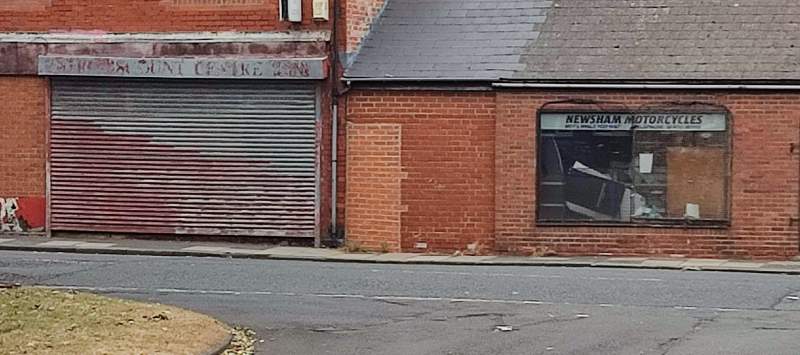
Newsham is perhaps the prototypical post-industrial suburb. The streets are lined with drab row-houses and shuttered shops whose walls sit darkened by cigarette smoke. But even here, there are signs of history, and signs of life. Walking along a small council estate, even in this decidedly hard-to-do area, people's personalities shine through. One car, judging by the bumper stickers, belongs to a proud gay naturist. Another house has a carved relief of an Indian chief (although i doubt the inhabitants have a drop of Native American blood in them). And at the end of the road lies the holy grail: the old station master's house, whose nearby decaying platforms just about peek over the fence.
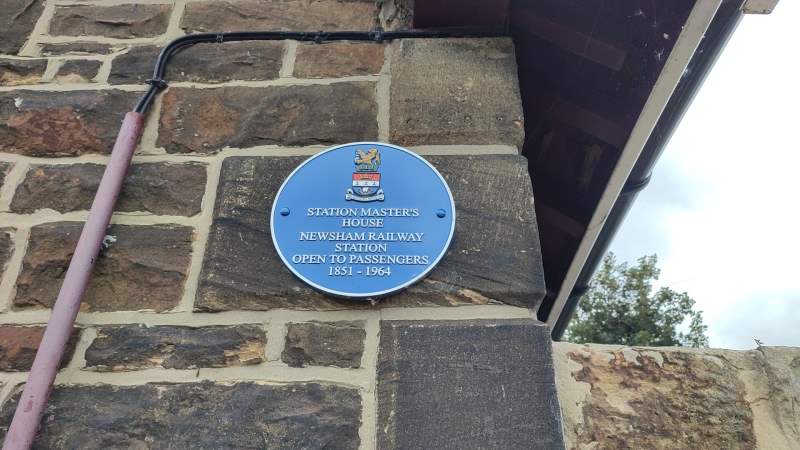
After this, our path splits in two: the main line continues up to Bebside, but a spur branches off and swings to the town centre. The first one is mostly a boring romp through farmland and reclaimed forests, so, for now, we'll be following the second line.
There are a lot of things about Blyth that i’m sure the town council would love for me to tell you about. It has an historic beach (though it’s all the way on the south end of town, and there’s no reason for you to make the trek when Newbiggin and Whitley Bay are closer and just as nice). There's a weekly market on Thursdays (though on the Thursday i went in, they’d all packed up already), by the plaza next to the shopping centre (whose selection of options is laughable when compared to Manor Walks in the next town over). And they’re dead proud of their local football team, the Spartans, who famously performed somewhat above average in the 1978 FA Cup (never mind that Ashington spawned two World Cup winners).
By now you may have noticed that everything in Blyth seems to be a slightly crappier version of something from elsewhere in Northumberland. This goes too for the ignoble fate of its former station. While some have been turned into houses, shops, pubs, or just returned to the land whence they arose, Blyth’s once-proud central station is now… a Morrisons car park.
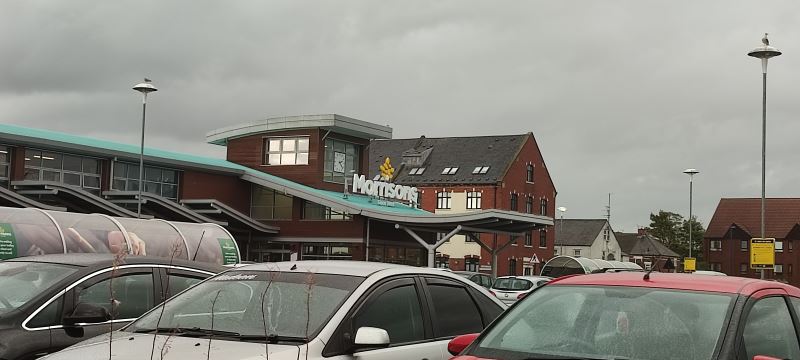
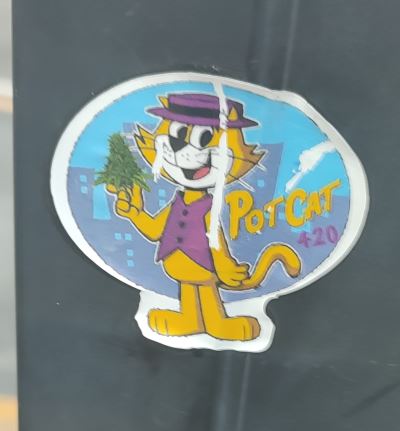
The branch line itself is now a straight-on footpath, cutting its way through town with a hospital and shopping centre on one side and impoverished estates on the other — until about halfway through, that is, when it suddenly becomes much more suburban in character; charming parks take the place of pools and appendectomies, while a long allotment fills the other side. (It was also — and i cannot stress this enough — absolutely pissing it down by the time i got to this end, and as such, i failed to get any usable footage. Just trust that it eventually meets back up with the main line.)
Back on the main line, the motorway leads to a depressing interchange at Bebside. Just across from the former site of the station sits the grimiest petrol station corner shop i think i’ve ever been to (no photos, alas, again); the site of the station itself has long been bulldozed and turned into a horse riding centre.
I’d love to stay and show you more, but the next phase in our adventure is a big one — because we’ll be taking a brief diversion to County Durham. It’ll all make sense when we get there. Ciao!
Down a narrow alleyway to the back end of St Nicholas’ Cathedral, in Newcastle, one can find a rather curious decoration garnishing a door on the opposing façade. The “vampire rabbit” has stood watch over the cathedral for at least half a century; while records are scarce (a quick search of Google Books doesn’t bring up anything until the twenty-first century), it could well date back to the building’s construction in 1901.
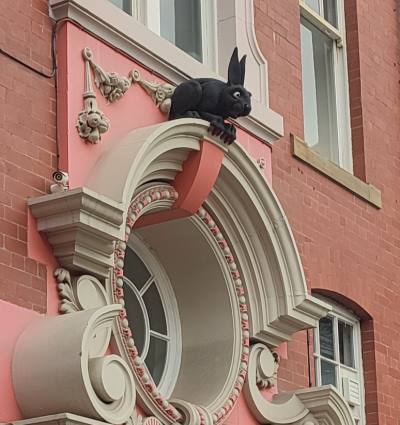
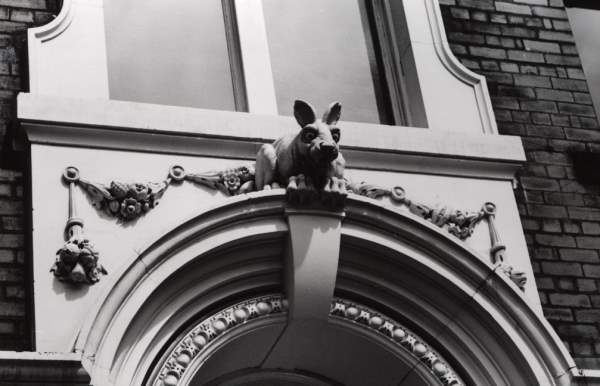
Here’s the thing, though. Nobody knows how it got there. Indeed, even the name “vampire rabbit” is a misnomer; its jet-black fur and red claws were added on some time in the 1990s,i as were its distinctly batty ears. Some say it was put there to scare away wannabe graverobbers, but i have my doubts that twentieth-century crooks would be so dumb.
Yet others posit that it represents a mad March hare, arising at the time of Easter, or that it refers to Thomas Bewick, a nearby engraver who had a fondness of all things lagomorphic. Most fascinatingly, a theory advanced by one Mr Adam Curtis suggests a Masonic pun in reference to one George Hare Phillipson, a local doctor (hence vampires) and active Freemason, as was the lead architect, one William H. Wood. It being a secret society in-joke would also explain why it’s located around the back, rather than the front, which faces onto one of the busiest streets in town.
Perhaps we might never know for sure. In any case, it’s a fascinating little secret — what do you think is most likely?
Last time on The Garden: A strip mall turns out to be a place of immense historical curiosity, i am interrupted by a rude troupe of boy racers, and find myself caught up in the lyrics of a pro-union folk song.
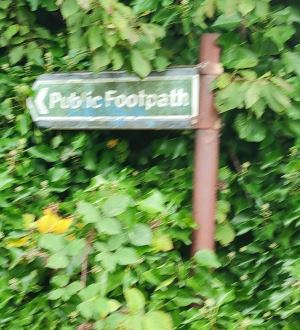
Leaving Seghill, going past a house with a conspicuous Northumbrian flag, the landscape once again slips swiftly back into ruralia — a common occurrence on this leg of the journey. No sooner had i left behind the station house than i found myself on a dirt path which i wasn’t quiiiite sure i was meant to be on.
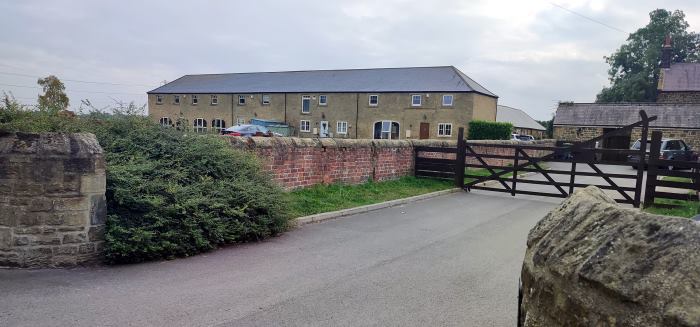
This was the small hamlet of Mare Close, essentially a farmhouse surrounded by a few cottages. I have a sneaking suspicion that everyone living there has been friends since primary school, though i'll never know for sure. Opposite the cottages, by the next leg of my route, lay a small village church and graveyard which i dared not enter. Onwards.
Seaton Delavalα sits at the heart of the valley. Turning one way, there lies a charming local coöperative store, a genuine lordly manor (owned by the town’s namesake De la Val family, who came over after 1066), the previously-blogged village of Holywell, and, eventually, the seaside settlement of Seaton Sluice.β Unfortunately, we’ll be turning the other way, by where once stood a colliery.
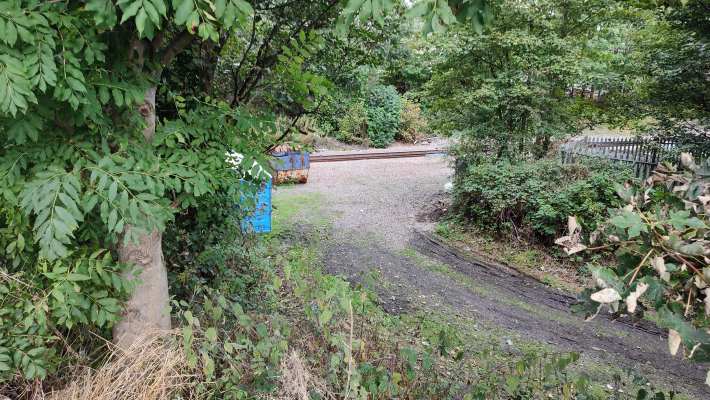
The former site of Delaval’s station can hardly be considered a sight for sore eyes. Cars and lorries pass by, horns blaring, trying to weave their way between those turning into the nearby petrol station.γ The location of the station itself is an uninspiring gravel pit on one site with an overgrown nettle-filled path on the other; next door is a chain pub whose car park will be getting embiggened to accommodate the extra traffic once the railway reopens.
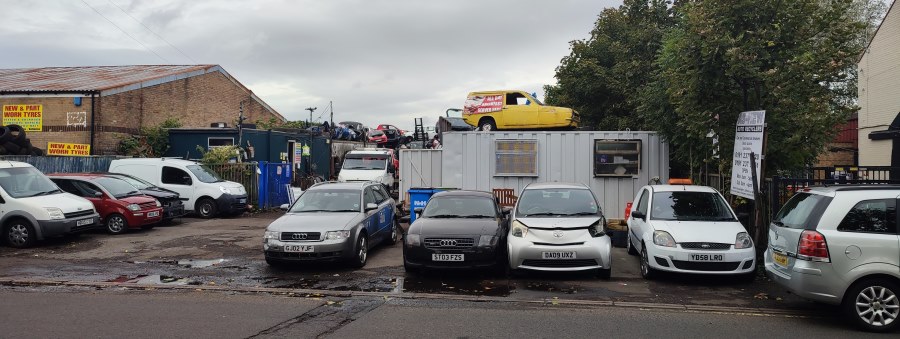
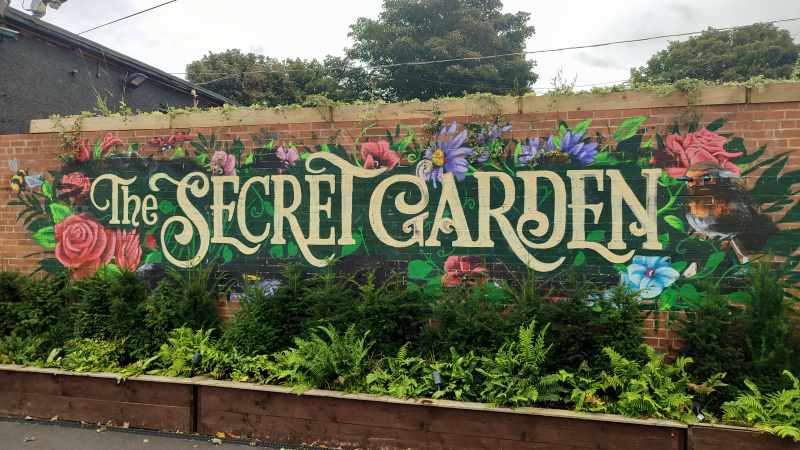
It doesn’t get much better. A few interesting-looking eateries (a grimy-looking café called “Only Fools and Sauces”, a venue by the name of the Secret Gardenδ with a wonderful hand-painted sign) added some initial spice, but soon i was back to the same industrial wasteland: Auto recycling! Furniture wholesalers! Caravan storage! Chemical producers! The works!
...I said something about a colliery, didn’t i?
16 January, 1862. It’s half past ten — or, at least, it might be. You’ve been labouring away in the coal pit since two in the morning, and you’ve not seen the sun since. The shift is almost over, and it’s time to swap over with the next group.
One by one, your comrades file in line to get out. A huddle of people enter the rusting lift. The familiar ketter-ketter-ketter shudders through the cave — but then, for a fraction of a second, all falls silent.
Your heart races. A drop of water falls from the ceiling. Nobody makes a sound.
And then, all of a sudden, it is as though Thor’s hammer has crashed into the ground. The earth around you shakes in terror, lets out what can only be described as an otherworldly scream, as ten tonnes of blood-red steel smash into the floor.
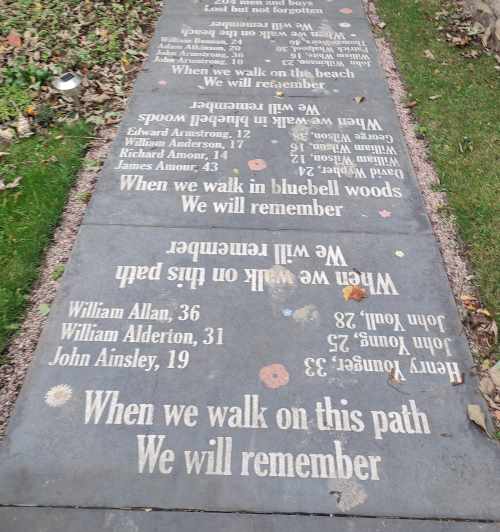
This was the Hartley Pit disaster, and its shockwaves can still be heard across town.
Just across from the telltale jackhammers and yellow tape of a housing estate so new Google Maps hasn’t caught up yetε sits a lovely memorial garden, explaining the story of the tragedy, with a poem to contemplate as you ramble along the path.
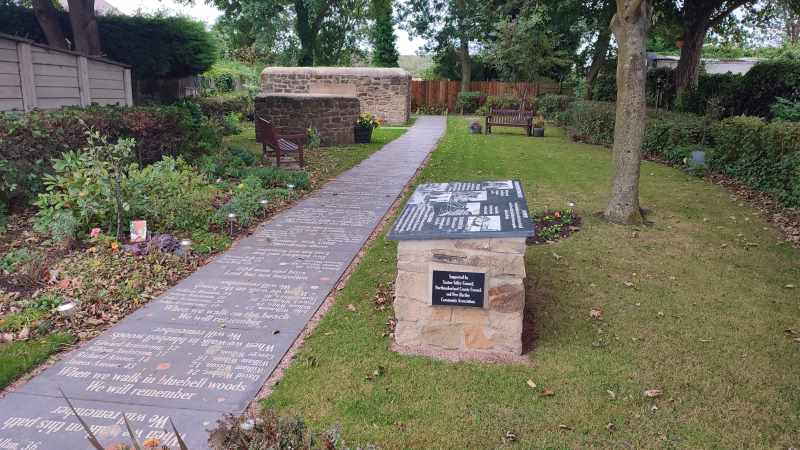
In terms of stations, the town has had two — Hartley and Hartley Pit — both right next to each other, and neither seeming to have any chance of reopening.
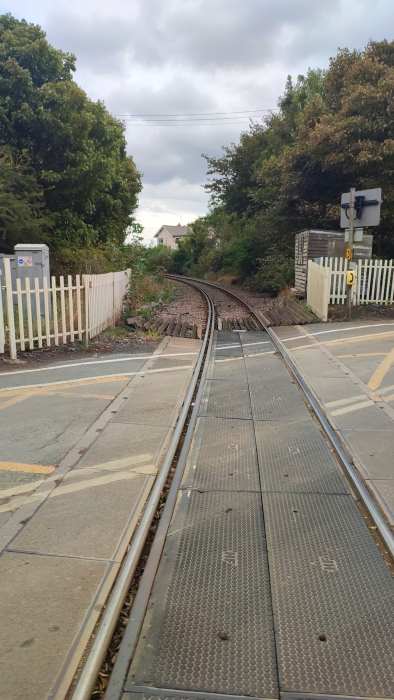
I was a bit anxious about continuing on, because there were several serious-looking men in hard-hats and high-vis jackets, but they didn’t seem to mind. They really, really should have tried to stop me from going to where i was going next.
Coming up on The Garden: your author tries not to disturb some horses, desperately tries to avoid going to fucking Blyth, and accidentally sneaks in a brief trip to Durham. I promise, it makes sense in context.
Last time on The Garden: the axe falls on the Blyth and Tyne line, and i foolhardily decide to walk its length…
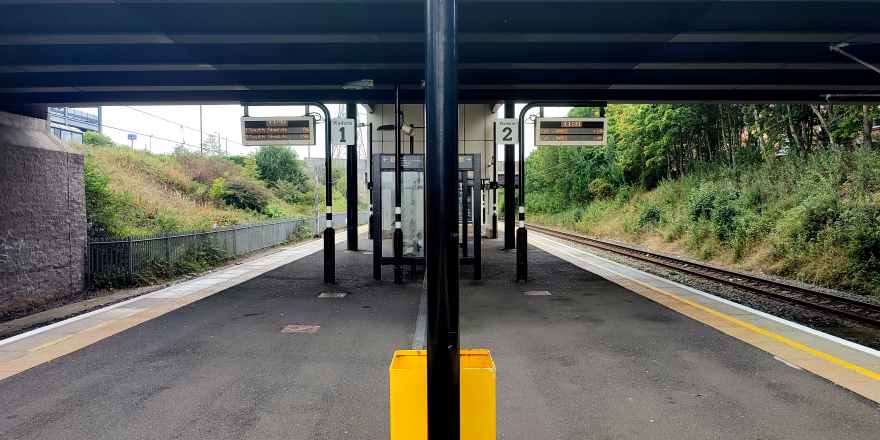
Our journey begins at Northumberland Park, in North Tyneside. Though it’s the first station we’ll be visiting, it was the last to be constructed, having only opened in 2005 — and it’s quite easy to tell, even after sixteen years of wear and tear; the place is outfitted with modern amenities, lifts, ticket machines flush with the wall, and, more lately, pandemic-themed graffiti opposite the platform. This unassuming metro station will, according to the county council’s plans, serve as the interchange between the old and new lines, heavy rail and metro meeting one last time before splitting apart and going their separate ways.

Setting off from there, the first thing that caught my eye were twin giants: a frosted glass-covered car park and a red-brick Sainsbury’s, unexpected icons of the modern British condition. It didn’t get much better from there; down the road lies an American-style strip mall lined with bookmakers trying to get people to piss away all their money.
This southernmost tip of Northumberland is criss-crossed by innumerable public footpaths, cycle paths, bridleways, and other routes for non-metal-box-related transport; ducking onto one of the reclaimed “waggonways” once used to transport coal, i found myself on the site of the second station on the list.
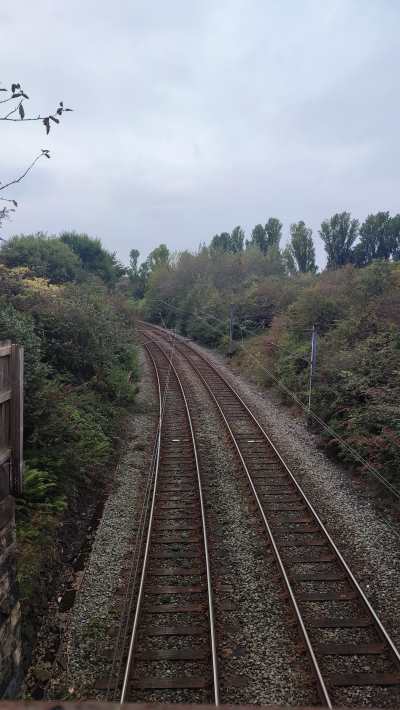
The leafy suburb of Backworth has a habit of burying its history. A hoard of offerings from Roman times was found underground in the 1810s, the last vestiges of the colliery that once was are long gone, and the tale of this sorry ex-station is rather similar. Opened in 1864 to replace a nearby station closing the same day, Backworth station served its community for over 100 years, surviving the Beeching cuts. But when the Tyne and Wear Metro was announced to come to town, the old station finally closed… for good. It wasn’t until the opening of Northumberland Park that there would be a replacement.
As i wandered through the village's verdant streets, i couldn’t help but think of its resemblance to the straight, cycle-friendly streets of my old hometown. A little greenery can go a long way.
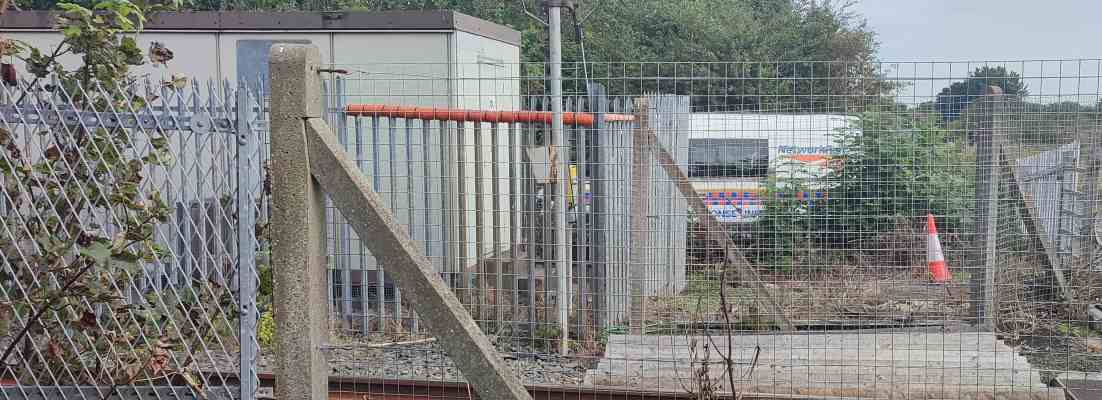
Network Rail were hard at work at the site of the aforementioned original Backworth station, whose plot of land now sits vacant, marking the city’s last hurrah; the further i walked along the dirt back roads, the further the sounds of bustling cars receded, until, ducking under a shady underpass, i found myself utterly alone amongst pastoral fields (and the overwhelming scent of manure).
That peace and quiet was swiftly interrupted by a troupe of boy racers on motorcycles and quad-bikes, but you can’t win them all, you know?
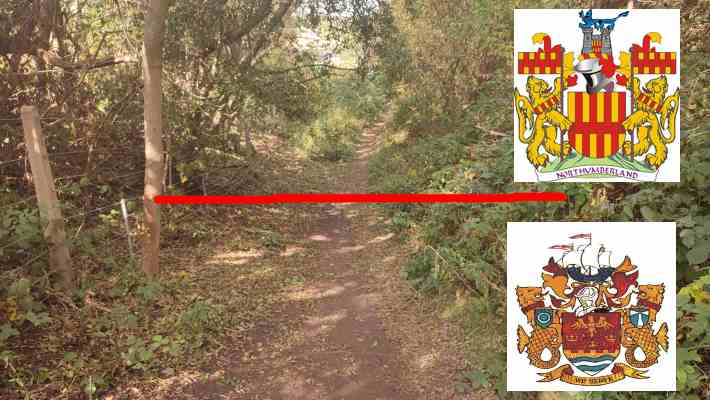
The (post-1974) border town of Seghill occupies only the tiniest fragment of the collective English consciousness, popping up briefly in an anti-scab miners’ folk song called “Blackleg Miner”:
It’s in the evening after dark,
when the blackleg miner creeps to work
With his moleskin pants and dirty shirt
there gans the blackleg miner![...]
So, divvint gan near the Seghill mine
Across the way they stretch a line,
to catch the throat and break the spine
of the dirty blackleg miner[...]
So join the union while you may
Divvint wait till your dying day,
for that may not be far away,
you dirty blackleg miner!
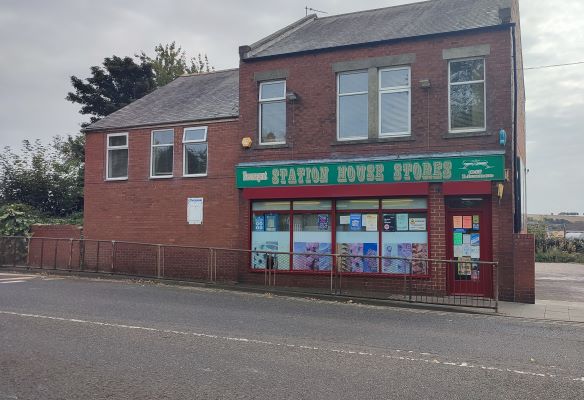
For our purposes, it’s chiefly notable for the fact that it’s the first disused station on the list whose buildings are still intact and in use, this time as a corner shop, from which i of course bought a copy of the local rag — prominently including a Q&A about the restoration of service on the line, which i thought a fitting reminder of why i set out on this silly old journey in the first place.
After getting some well deserved rest, i headed on off towards the next town over, awaiting what fresh stories i would find...
Next time on “Walking the Blyth and Tyne”: your author is reminded of her own mortality, finds himself in the company of a noble family, and shudders at the thought of having to go to Blyth, of all places on Gods’ green Earth

It’s March of 1963. The island of Great Britain is in the throes of its coldest winter in two decades, senior frontbench MP Harold Wilson was recently handed the reins of the Labour party, the Beatles have just released their debut album, and, somewhere in the bowels of Whitehall, Dr Richard Beeching is writing a report that will change the country’s connecting tissue forever.
Dr Beeching, you see, is the chairman of British Railways, the state-owned company in charge of rail transport, and they’re in a spot of financial trouble. British Railways are in charge of running fifteen thousand miles of track shuttling between about four and a half thousand stations, and the only way they can do that is via generous subsidies from Her Majesty’s Government — something which the governing Conservatives, as a rule, are never too happy about.
So, pen in hand, he takes a metaphorical axe to the network, marking about half of the island’s stations for closure. It’s not pleasant, but it has to be done — and, after all, people can just take the car to their nearest station if their town’s is shut.i I’m sure it won’t be too bad.
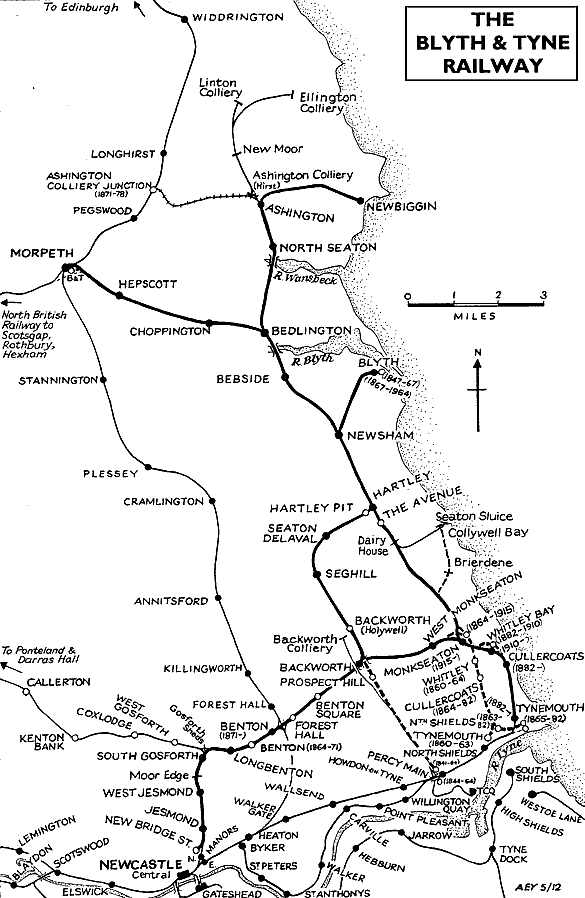
That's how, a year later, the last passenger trains ran along 5,000 miles of railway across England, Scotland, and Wales, including those connecting the mining heartland of industrial Northumberland. The Tyne and Wear Metro, opened in 1980, allowed some of these lines to reopen in Newcastle’s suburbs and (relatively) affluent coastal communities. But just a few miles north, the former Blyth and Tyne Railway has lain dormant ever since the axe fell… until now.
In recent years, the stars have aligned, and both the county council and Westminster have agreed to reopen the line, finally bringing these proud towns back together. The Blyth and Tyne Railway, now rechristened by the more attractive name of the Northumberland Line, is set to reopen by 2024. To celebrate this historic moment, i thought i’d see what has become of the stations and towns that were. I’ve identified fourteen stations, past, present, and future, along the line, and i’ll be walking between each of them in turn, seeing what stories they tell. The list includes:
Won’t you join me?